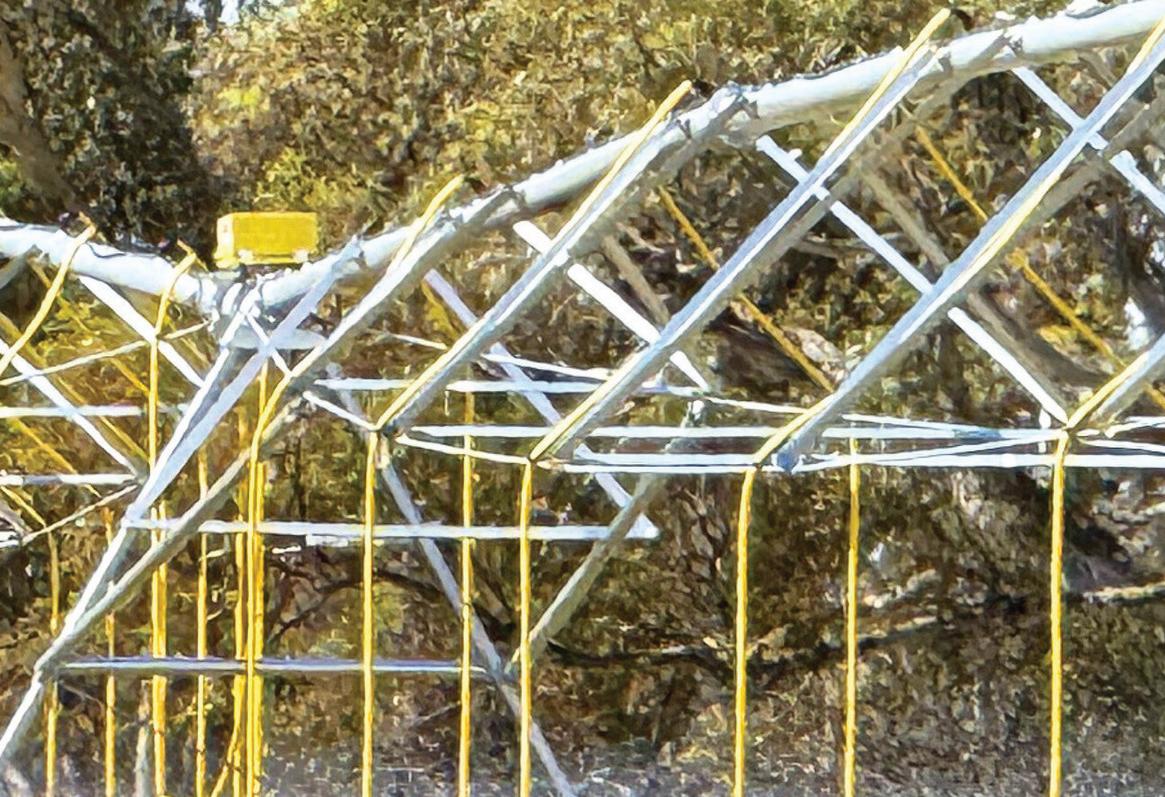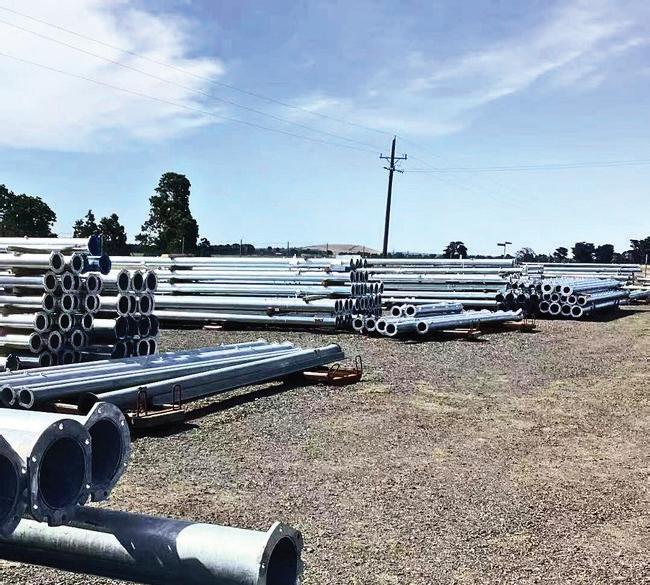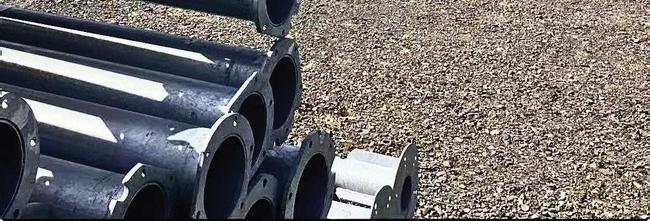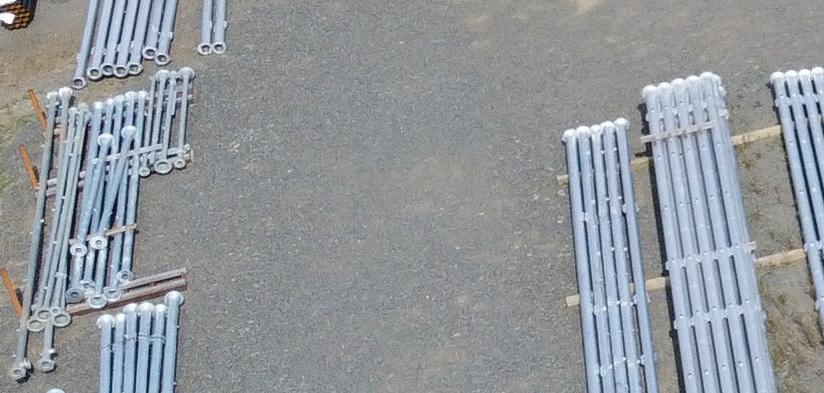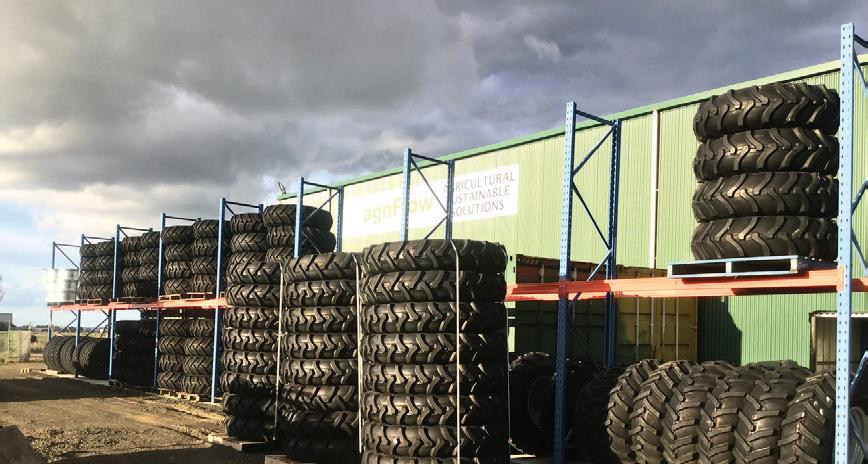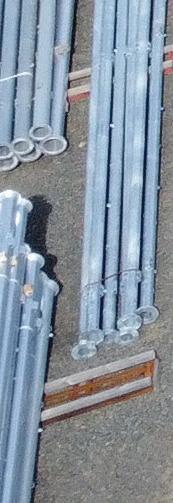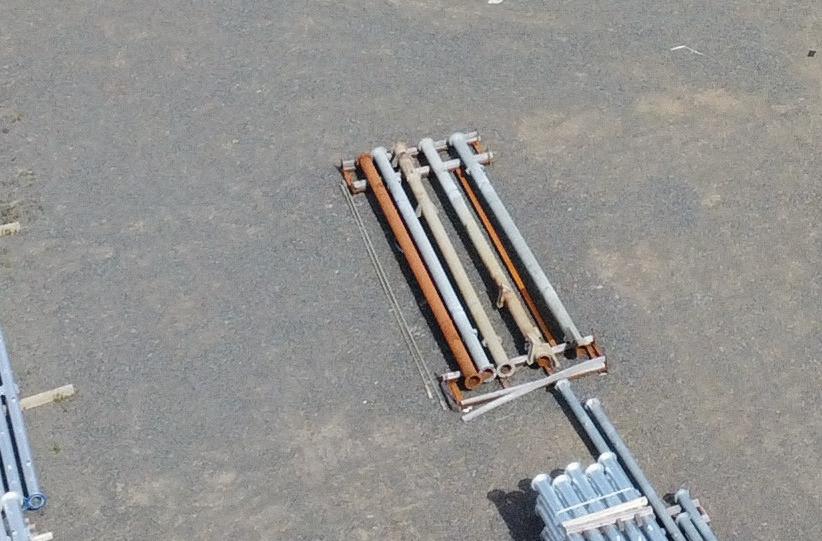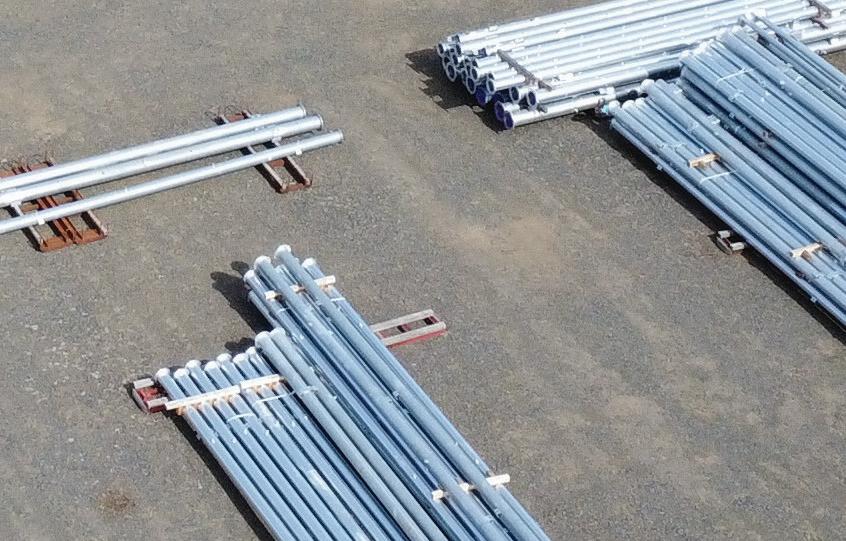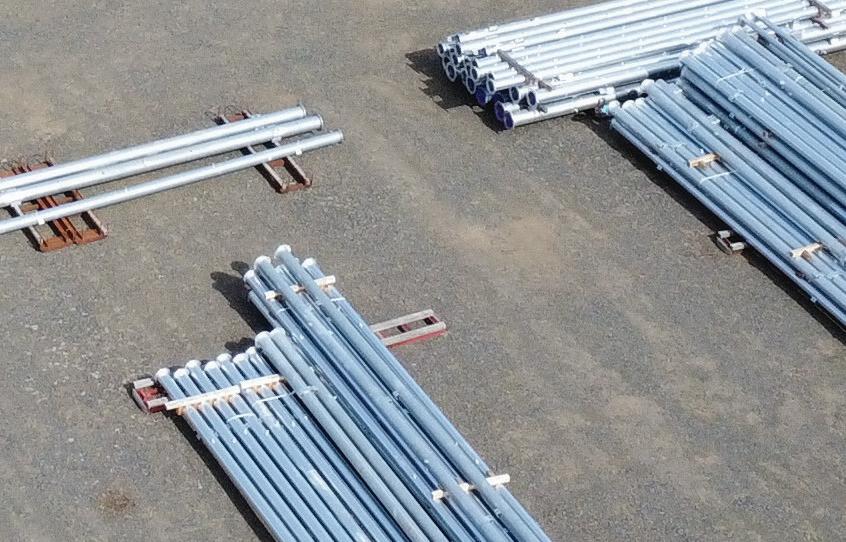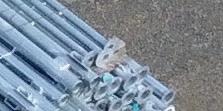
FERTILISER FRAILTY






PAGES 4 & 5 TOP YOUNG AUCTIONEER PAGE 9 RAMS ON OFFER PAGE 12
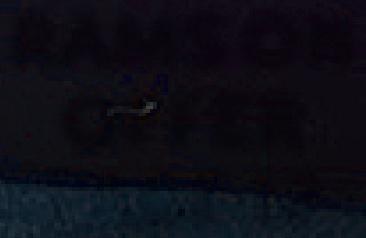


FERTILISER FRAILTY






PAGES 4 & 5 TOP YOUNG AUCTIONEER PAGE 9 RAMS ON OFFER PAGE 12

IN light of recent events and on behalf of its 8400 farmer members, Farmers for Climate Action points out some key facts.
The cost of climate change is enormous. Repeat fires, droughts and floods made worse and more frequent by climate change are smashing farmers. Pollution is creating a blanket around the earth and it’s keeping the heat in. 90% of the world’s pollution comes from fossil fuelsburning coal, oil and gas.
The cost of the 2022 Lismore floods alone was $6.4 billion via 242,000 insurance claims. Bureau of Meteorology records show the number of extreme heat days in Australia has increased tenfold since the 1960s, with 14 extreme heat days in the 1960s and 143 extreme heat days in the 2010s (P3). CSIRO has found climate change is already costing the average farmer $30,000 a year.
Climate change is sending farm insurance bills through the roof with some now choosing not to insure their farms. The Insurance Council of Australia, which is led by former Federal National Party Director Andrew Hall, stated during the Senate Inquiry into insurance costs and climate change: “Industry and governments need to continue to tackle the underlying driver of worsening extreme weather, climate change, by maintaining a focus on achieving net zero by 2050 with a focus on driving down emissions this decade.”
Nearly all of Australia’s farm trading partners have net zero commitments, and it’s understood China is currently drafting a carbon border adjustment tariff to apply to other countries not pulling their weight on emissions reduction.
Energy Institute Data reveals China has streaked ahead of Australia on clean energy with a higher primary consumption of clean energy.
There are 200 countries which each produce less than 2% of the world’s carbon pollution. If all 200 of those countries abandon pollution reduction, climate change worsens even faster and farmers will suffer more.
At the time of the Nationals press conference in Canberra on Sunday, electricity was free on the wholesale market across Queensland, NSW, Victoria and SA because abundant renewable energy had forced the price so low. This happens almost every day between about 10am and about 4pm when solar energy is in the grid. As more storage such as pumped hydro and batteries shift that solar energy from daytime to night-time, wholesale prices will drop (official data shows wholesale prices actually dropped last quarter). Wind farms tend to produce night-time energy, so as more of those connect to the grid, this will also

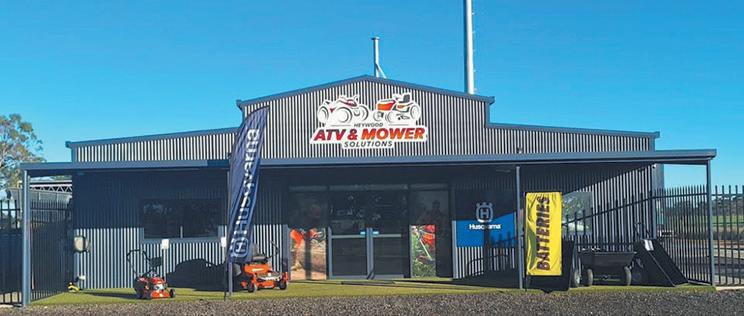
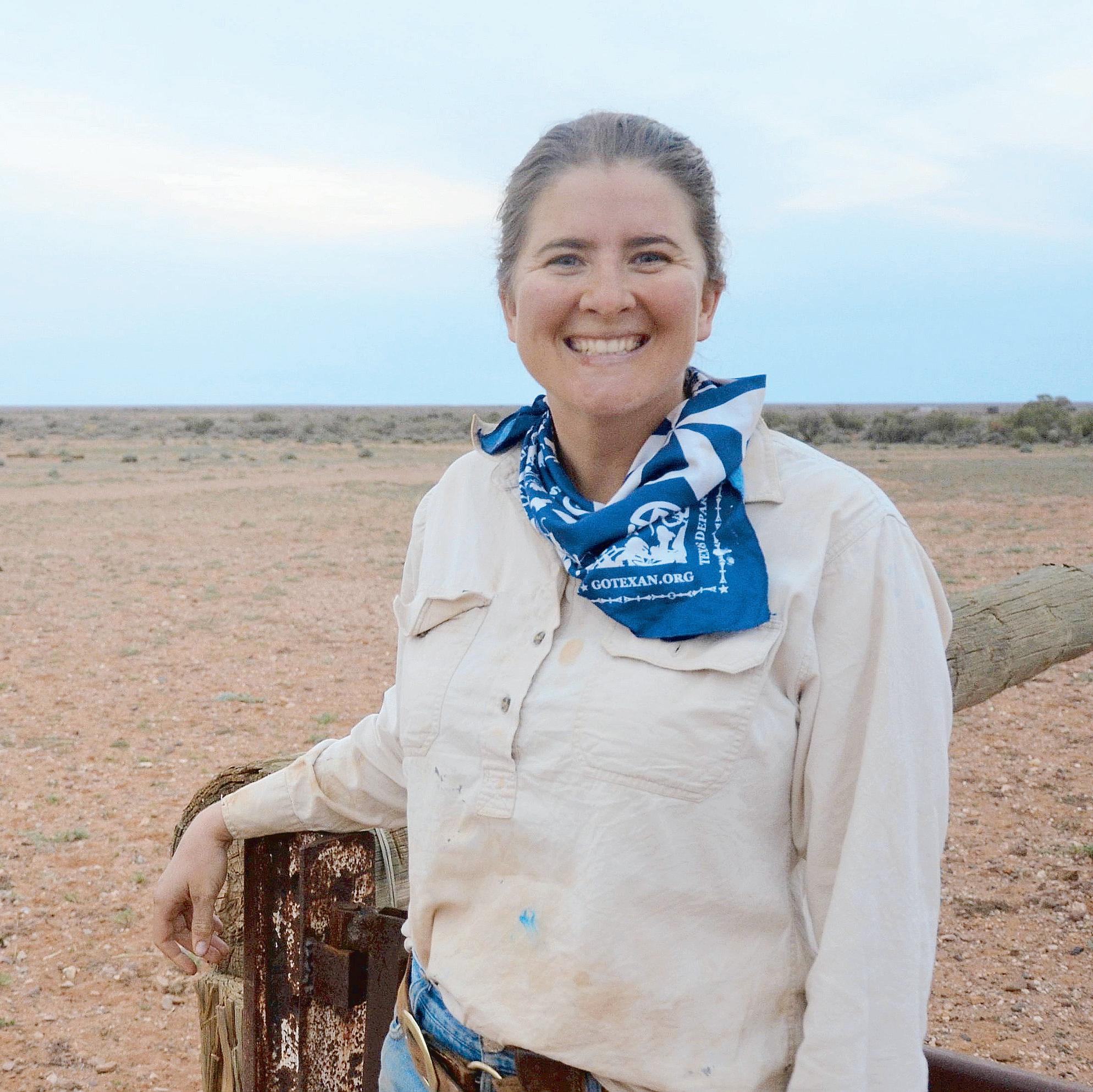
put downward pressure on night-time wholesale energy prices.
Stopping net zero would not stop the rollout of clean energy projects, because investors are building clean energy to replace unreliable old coal stations which are shutting now, and clean energy with storage is the cheapest and fastest form of electricity generation to build in Australia.
Farmers are on track to make $1 billion in drought-proof payments from clean energy companies by 2030.
SA cattle and sheep pastoralist Ellen Litchfield has spoken out on the issue.
“We need politicians to listen to farmers, not fossil fuel billionaires,” she said.
“Let’s be clear: coal and gas drive climate change; climate change is smashing farmers and sending farm insurance costs through the roof; ending net zero will not end the rollout of clean energy, and nuclear isn’t viable without



net zero commitments.
“We’re being smashed by hotter and longer droughts in my part of the world and we know that burning coal and gas are what drives climate change.
“We sell our beef and lamb all over the world and we need net zero to make sure our trading partners continue to have confidence in Australian produce.”
Victorian sheep farmer Luella Drinnan said: “Climate change costs farming families money. Agriculture is one of Australia’s most valuable sectors and climate change directly compromises farming businesses.
“On my family farm, looking after the environment is just best practice farming. As a nation, we need to reduce emissions and work towards net zero by 2050 to protect our farming businesses, food supply and agricultural sector.”
EVERY year grain crops face seasonal risks in spring. With the market for hay quite strong and the grain market looking weaker than other years, farmers might choose to cut their crops for hay instead of harvesting them.
To help work out the most profitable option, Agriculture Victoria Seasonal Risk Agronomist Dale Boyd is encouraging growers to take advantage of some helpful online calculators.
‘Growers are facing elevated seasonal risks this year due to below average growing season rainfall,’ Mr Boyd said.
‘Our calculators will help farmers check how well their crops are doing for grain and weigh up whether it’s better to use them for fodder to optimise outcomes in a challenging season.’
The Dry Matter Calculator helps farmers work out how much dry matter their crops may yield in tonnes per hectare so they can decide the best time to cut hay.
The Hay versus Grain Calculator compares the gross margin of both hay and grain in dollars per hectare, offering a picture of potential profitability.
The Crop Yield Calculator helps farmers quickly estimate cereal crop yield in the field using a ruler and smartphone. It’s a practical tool for assessing paddock performance, forecasting grain quality, and planning harvest logistics.
Together, these tools can help farmers to make confident, data-driven decisions in the field. To use these calculators visit the following links:
• Dry matter calculator https://go.vic. gov.au/3L3eO0R
Hay versus grain calculator https:// go.vic.gov.au/42y8THb
Crop yield calculator www.extensionaus.com.au/soilmoisturemonitoring/ crop-yield-calculator
For information on available drought support visit agriculture.vic.gov.au/ drought or call 136 186.
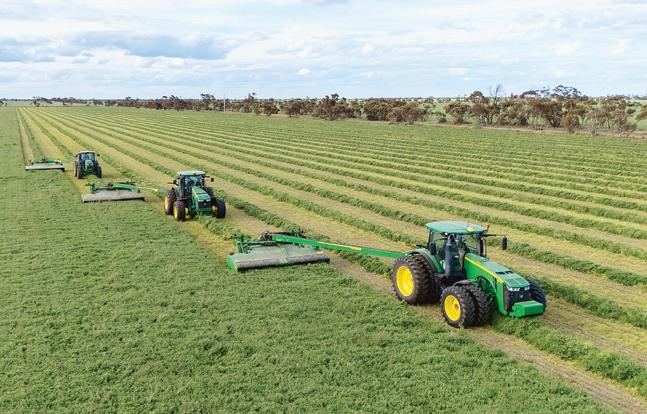





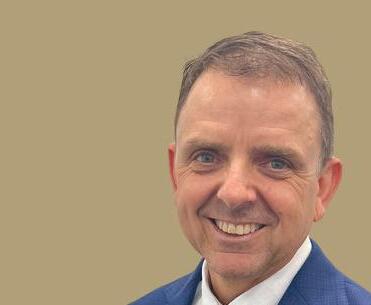







AUSTRALIA is forecast to harvest a larger winter grain crop this year, with Rabobank estimating total volumes to reach 62.8 million tonnes in its just-released annual 2025/26 Australian Winter Crop Forecast.
The agribusiness banking specialist’s RaboResearch division forecasts total winter grain and oilseeds production to come in approximately 3.8 million tonnes above last season, an increase of 6.4 per cent. And 6.1 per cent above the five-year average.
Report lead author, RaboResearch senior grains and oilseeds analyst Vitor Pistoia says this growth outlook is underpinned by aboveaverage rainfall received across a number of key grain-producing regions through the season, most notably in Western Australia and northern New South Wales.
WA, Mr Pistoia says, may be on track to record its second-largest crop on record. Positive soil-moisture levels in northern NSW and in Queensland have again supported strong yields this year, and recovery from drought conditions in parts of South Australia will also contribute to larger national grain volumes.
Rabobank says the increased tonnage this harvest will largely be driven by improved wheat and canola yields, as well as a significant rise in area cropped to barley.
However, the report cautions, Australia’s crop farmers face a less optimistic outlook when it comes to prices, with global grain supply surging and placing downward price pressure on the market.
“Australian grain exports face intense competition as global production remains at high levels, especially for wheat and barley,” Mr Pistoia said. “Large harvests in Russia, the EU and the US have weighed on global markets, while carryover stocks continue to build in major exporting nations, such as Canada and here in Australia.”
Locally, the report says, the combination of a sizeable new winter crop and a large carryover crop from last season is expected to “limit upside potential for wheat prices”
“In such a well-supplied market, Australian wheat prices have limited room to go against the global trend,” it says.
Commodities
Australia’s wheat production is forecast to be 0.6 per cent up on last season to 34.1 million tonnes, according to the report, and also up 0.6 per cent on the five-year average.
Barley production is expected to increase 14 per cent on last season, to 14.9 million tonnes, yields allowing, the report says. This would be about nine per cent above the five-year average and drive this year’s barley crop to record levels.
Mr Pistoia said with a potential record-high barley crop this season, the pace of exports will be crucial in shaping market dynamics. “Globally, barley faces structurally muted demand growth from the malt industry, driven by shift-


ing trends in alcohol consumption, while a record-high global corn crop means the global animal feed market is also well supplied,” he said.
Domestically, Mr Pistoia said, demand for barley is anticipated to remain firm, supported by the cattle and sheep sectors, which should help to buffer the impact of an abundant global corn supply on feed grain markets.
For canola, Rabobank expects this season’s production will expand by almost 10 per cent to approximately 6.5 million tonnes (2.3 per cent above the five-year average).
Mr Pistoia said Australian canola exports (non-GM) to the EU may soften compared with last season, due to a recovery in Europe’s own production. However, he said, the EU is expected to replenish its stocks, which could potentially bring price stability into quarter two 2026.
There may also be resurgence in Chinese demand for Australian canola in 2026 following the tariffs it implemented on Canadian canola, potentially improving prospects for Australian GM canola.
For pulses, production is predicted to expand by 16 per cent year-on-year this harvest to 5.7 million tonnes, which would be an “impressive” 49 per cent above the five-year average, Mr Pistoia said.
The report says Australian chickpea production alone is likely to surpass 1.8 million tonnes. While this is down almost 20 per cent from last year’s record, it would still be the third-largest crop on record. Lentils are forecast to rise 73 per cent on last year, lupins 43 per cent and faba beans 18 per cent.
However, RaboResearch says, other key global producers, such as Canada and Russia,




are also expected to have large crops and the strong global supply of pulses is weighing on prices.
Overall, winter crop production is forecast to increase in Western Australia and rebound in both South Australia and Victoria, where challenging drought conditions had seen production totals decline last harvest. Statewide, winter grain crops in NSW and Queensland are expected to be down on the very strong levels seen in the previous year.
Total winter crop production for Western Australia is forecast to come in at 24.6 million tonnes, up 9.5 per cent on last year’s harvest, the report says.
“This year, the season in WA behaved similarly to last year,” Mr Pistoia said, “with a late season break followed by good rainfall in most regions across the state during July and August. Temperatures were supportive to grain filling as well, with a mild first half of September and typical heat waves starting by the end of the month.”
South Australia is seeing a much-needed production recovery, with the state’s total winter grain harvest predicted to reach 8.6 million tonnes, 67 per cent above last year’s droughtimpacted total, albeit two per cent below the five-year average.
Victoria’s recovery looks set to be less impressive, although RaboResearch forecasts the state’s total grain production this season to reach 8.8 million tonnes, up 19 per cent on last year’s depleted harvest.
Although down on last year’s record 3.8 million tonnes, Queensland is still set to “fill the bins” this harvest, Mr Pistoia said, with the season likely to bring a winter crop of approxi-

mately 3.5 million tonnes, which would still be one of the largest on record. This is eight per cent down on last year, but 19 per cent above the five-year average.
For New South Wales, though forecast to be 14 per cent down on last year’s total (which was the second highest on record for the state), harvest is expected to come in at a solid 17.4 million tonnes, Mr Pistoia said.
“As with last year, we have once again seen a production imbalance between the north and south of the state,” he said. “The northern half of the state has experienced average to positive growing conditions, while the southern regions faced sub-optimal soil moisture during September and early October. And these conditions are likely to be reflected in yield variance across the state.”



Australia, Dyno-Nobel’s
PATRICK
MACKARNESS
AUSTRALIA’S last major manufacturer of ammonium-phosphate fertiliser — the Dyno Nobel (formerly Incitec Pivot) complex at Phosphate Hill, north-west Queensland — is teetering.
The company has warned that unless a buyer is found by 31 March 2026, it will begin an orderly closure by September 2026. This is more than a local business story. It goes to the heart of Australia’s food security, industrial resilience, and energy policy.
How fertiliser is made — the chemistry in plain English Phosphate fertiliser requires three essential ingredients: phosphate rock, mined from the Georgina Basin near Mount
Isa; sulphuric acid (H?SO?), to dissolve the rock and release phosphorus; and ammonia (NH?), which supplies nitrogen to form the finished fertiliser — MAP (mono-ammonium phosphate), DAP (di-ammonium phosphate) or ammonium sulphate. In simple terms, the rock provides phosphorus, the acid breaks it open, and the ammonia adds nitrogen. This produces the plant-food that drives yield. If any one of these links fails, the entire chain collapses.
Two essential inputs under threat
Both the acid and the gas required for manufacture are in jeopardy. The sulphuric acid comes from Glencore’s Mount Isa copper smelter, which captures sulphur gases from the ore and converts them to acid. After 60 years

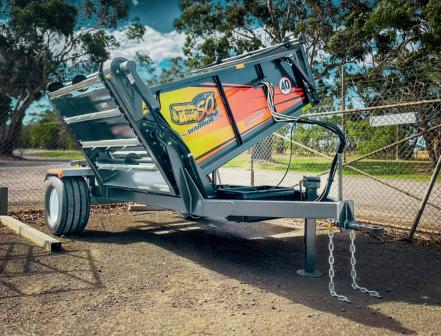

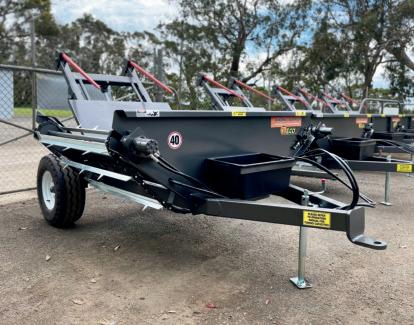


of mining, ore grades have fallen and global smelting margins are tight. The smelter’s future now depends on continued state–federal support. The ammonia feedstock depends on natural gas, the source of hydrogen in the Haber–Bosch process. East-coast gas prices have risen to the point that long-term industrial supply contracts are no longer viable. If either input fails, Phosphate Hill stops. As Federal Industry Minister Tim Ayres put it: “There is an interdependence between these facilities … it’s a big industrial ecosystem that sustains hundreds of jobs and plays a critical national role.” (ABC News, 9 Oct 2025) Why this matters to every farmer MAP and DAP deliver both nitrogen and phosphorus in one granule — the backbone of
broadacre cropping, cotton and horticulture. Ammonium sulphate provides nitrogen and sulphur for dairy pastures and canola. Without them, yields fall and food prices rise.
Globally, about half of all human food production depends on synthetic nitrogen fertiliser.
University of Melbourne professor Richard Eckard points out that the production and use of nitrogen fertiliser account for roughly a third of agriculture’s greenhouse-gas emissions worldwide, or about 5–7 per cent of total global emissions — yet they sustain nearly half the world’s population. (Crawford Fund Conference 2025) The irony, he adds, is that agriculture cannot achieve net zero without the very technology that keeps humanity alive.


Wheat Yield per Hectre (1830 - 2024)
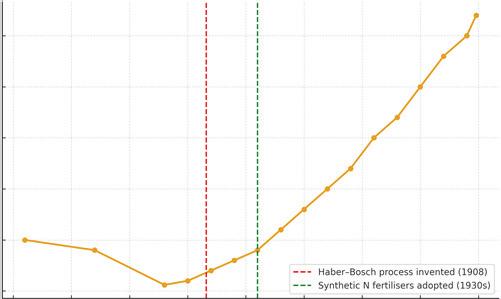
The miracle — and the burden — of Haber and Bosch
More than a century ago, German chemists Fritz Haber and Carl Bosch solved one of civilisation’s greatest puzzles: how to capture nitrogen from the air to make ammonia. Their invention — the Haber–Bosch process — won them separate Nobel Prizes and transformed agriculture.
Before its discovery, soil fertility and crop yields were declining in many nations through the 1800s as natural nitrogen was exhausted. Afterward, yields surged and the world’s population exploded.
A chart from Our World in Data vividly illustrates this transformation: global cereal yields were virtually flat through the 19th century but climbed steeply after 1910 — exactly when industrial nitrogen fertiliser became available. Had Haber–Bosch not been invented, demographers estimate the world’s population might never have exceeded four billion. It quite literally changed the trajectory of human history.
Yet the same process now carries a climate price. Each tonne of ammonia made with natural gas emits about 1.8 tonnes of CO?, and fertiliser use adds nitrous oxide (N?O) from soils — a greenhouse gas nearly 300 times more potent than CO?.
Green, blue and grey ammonia explained Grey ammonia is made from natural gas, releasing CO?. Blue ammonia captures and stores the CO? underground. Green ammonia uses renewable electricity to split water into hydrogen for the Haber–Bosch reactor. Chemically the products are identical; the difference lies in energy source, emissions profile, and cost.
Why green fertiliser still costs far more Today, conventional (“grey”) ammonia costs around A$450–550 per tonne to produce, depending on gas prices.
Green ammonia, made using renewable electricity priced about A$115 per megawatthour, costs about A$1,250–1,400 per tonne






— roughly A$800–950 more per tonne of ammonia.
Because ammonia makes up about onethird of the cost of finished fertilisers such as MAP and DAP, this equates to an increase of roughly A$150–250 per tonne of fertiliser, or 15–25 per cent higher prices at the farm gate. Put simply, green fertiliser isn’t yet competitive unless renewable electricity becomes extremely cheap or electrolysis costs fall dramatically.
Australia’s only green-ammonia plant As of late 2025 there is just one operational greenammonia facility in Australia: the Yara Pilbara / ENGIE “Yuri” project in Western Australia. It uses a 10-megawatt electrolyser to supply a small fraction of Yara’s ammonia needs from renewable power.
Other proposals — such as Allied Green Ammonia near Tennant Creek and several CSIRO-linked pilots — remain in feasibility. For now, virtually all Australian fertiliser remains fossil-fuel-based. What can be done?
Industry sees two possible strategies: Bring the inputs to the rock — build a sulphur-burning acid plant and new gas pipelines into the Georgina Basin (estimated cost A$250million +). Or, take the rock to the inputs — transport phosphate rock to coastal complexes at Kwinana (WA) or Port Pirie (SA), where gas and acid are already available. Neither path is easy, and both depend on stable long-term energy policy.
Political voices: blame and anxiety Labor ministers emphasise partnership and transition. Senator Tim Ayres describes the Mount Isa–Phosphate Hill network as “a big industrial ecosystem” , while Resources Minister Madeleine King says governments are “working together to keep the smelter going” . The Opposition has taken a sharper view. Nationals leader David Littleproud warned: “Losing Phosphate Hill would be like shutting down the last refinery before a war — it’s a national

security issue.
Fertiliser isn’t a discretionary input; it’s the difference between food and famine.” (North West Weekly, 1 Oct 2025) Barnaby Joyce told Sky News: “You can’t keep telling farmers to produce more food and then close the factories that make the fertiliser they need.” Shadow Climate Change and Energy Minister Ted O’Brien added in Parliament: “The government’s energy experiment has left manufacturers paying twice what competitors do for gas and electricity. Phosphate Hill is just the latest casualty.”
(Hansard, 9 Oct 2025) Queensland crossbencher Robbie Katter MP drove home the same point: “We import 80 per cent of our fertiliser now. There’s one plant left, and it needs a gas-reserve policy.” (Queensland Hansard, 18 Sep 2025)
The risk of total import dependence If Phosphate Hill closes, Australia will rely almost entirely on imported fertiliser. Most MAP and DAP now come from China, Morocco, Saudi Arabia, Jordan and the United States, shipped through Townsville, Fremantle and Adelaide.
Each carries heavy upstream emissions from fossil-fuel ammonia and sulphuric-acid production — emissions that may soon appear in farmers’ Scope 3 carbon accounts. Australia would be outsourcing both the jobs and the pollution.
National resilience — not just green ambition
Australia maintains only about 32 days of liquid-fuel reserves at current consumption rates — well short of the 90-day security benchmark set by the International Energy Agency.
(Australia Institute, “Over a Barrel: Liquid Fuel Security in Australia” , 2022; IEA Benchmark 2021) Yet there is no equivalent benchmark for fertiliser, which is equally essential to feeding the nation.
If we value food security, fertiliser should be treated like fuel: as a strategic input, not a disposable commodity. So it seems that we are acquiring a taste for risky behaviour surrounding key factors of production.
Global context and policy irony
Bill Gates, a major investor in climate technologies, warns against climate absolutism.
In Three Tough Truths About Climate (2024) he wrote: “Our goal should be to prevent suffering — particularly for those in the poorest countries.
Climate change will have serious consequences, but it will not decimate civilisation.” It’s a reminder that while decarbonisation matters, keeping people fed remains the first moral obligation. Professor Eckard puts it bluntly: “Without Haber–Bosch, the global population might have stayed below four billion.” Conclusion — the frailty laid bare Phosphate Hill’s crisis reveals how thin Australia’s industrial foundations have become. A single smelter’s closure could cripple a fertiliser supply chain; a shift in gas pricing could determine national food security.
Unless government and industry bridge the gulf between clean-energy ideals and practical supply, Australia may soon discover what food insecurity looks like in a developed economy. “Phosphate Fertiliser Frailty” is not alarmism — it’s a diagnosis of how narrow our margin has become.











WHILE eagerly awaiting the first Australian/ New Zealand deliveries of the highly anticipated Case IH AF Series combines, selected customers have had a chance to see their new machines come off the assembly line in the US.
Case IH hosted a group of 27 customers from Australia and New Zealand for a 10-day visit to the US in September, where they visited the Case IH combine manufacturing facility at Grand Island, Nebraska, and took in US’s biggest field day event, Farm Progress in Iowa.
“The AF Series is completely new from the ground up, and for CNH this trip was recognition of these customers being the first to purchase what is a revolutionary new series and to give them the opportunity to see where these combines are produced, give them more exposure to the process and gain more information from the people who are the coalface of their production,” said Marc Smith, Crop Harvesting Portfolio Manager for CNH ANZ.
The AF10’s 775 horsepower makes it Case IH’s highest horsepower and biggest capacity combine ever in Australia/New Zealand, while the AF9 offers 634hp.
The grain-handling capacity of the two models has been increased, too, with the AF10 boasting an industry-leading 20,000L grain tank, while the AF9 has 16,000L.
The increased capacity of the AF Series was one of the features that attracted Victorian grower Cameron Martin, who has ordered two AF10s he hopes to pull into service for this year’s harvest.
“We’re currently running four of the Case IH 50 series combines and we’re hoping we’re going to be able to cut our fleet by half and use two AF10s with 61-foot platforms or harvest fronts,” he said.
“We were interested in the AF10s because of their increased capacity and minimal grain loss out the back, which would be one of the biggest advantages for us. And the prospect of low maintenance on the machines, too.
“I think they really are going to be a game changer going forward, and we’re looking forward to getting them into the paddock.”
Cameron and his family run Martin Ag Farming, operating a grain property at Bungeet, in Victoria’s north-east, and another west of Walgett, NSW.
The Martins have started harvesting their canola crop at Walgett and Cameron’s hopeful the new AF10s will arrive in time to join the back end of the harvest there - They’ll start on the canola at their Victorian property in November.
“In purchasing these new combines we’re looking for greater efficiencies in the products on the market, and what we can bring into our business that’s going to help us with regards to labour challenges, and assist in terms of productivity and time,” he said.
“The canola crops are looking good and
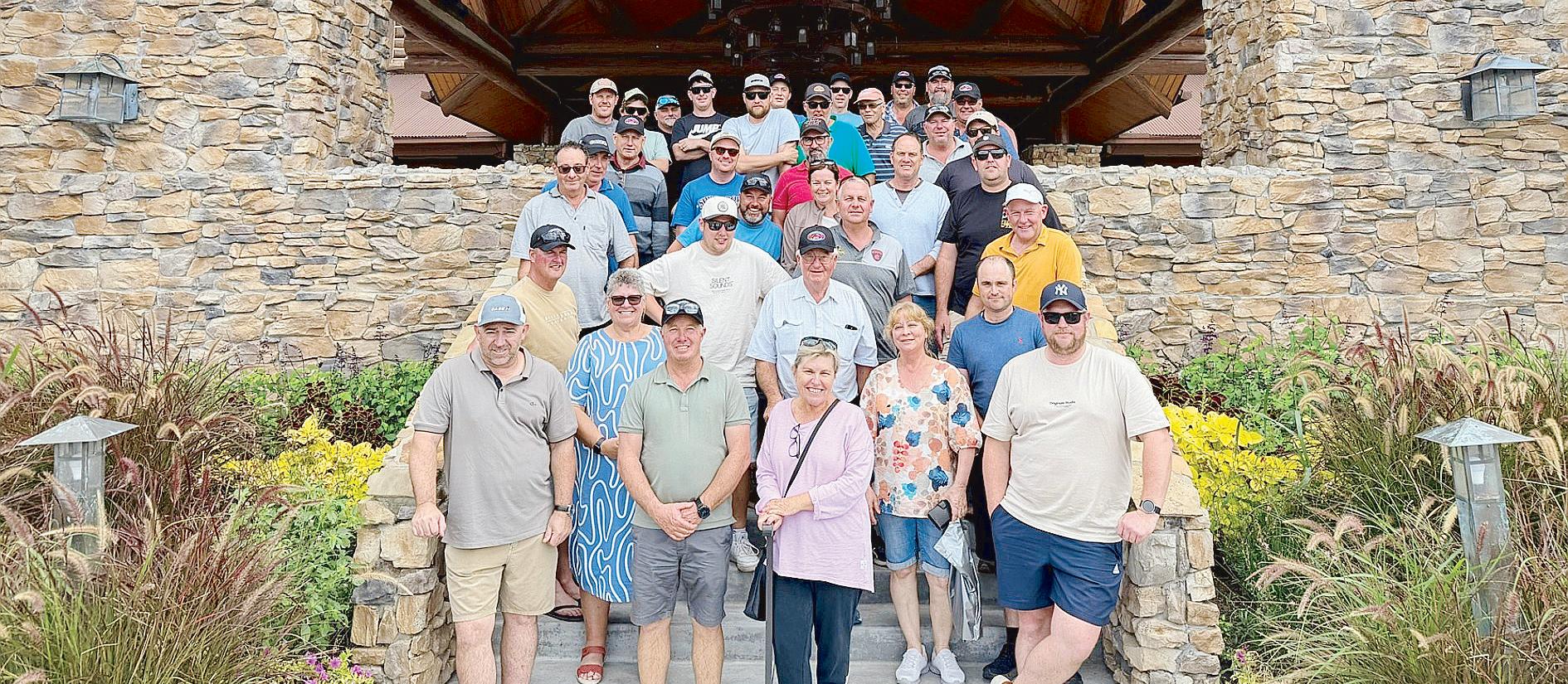

we’ve got to get them off before there’s the chance of something like weather damage, so we need the largest capacity machines to be able to deliver the right result through minimal grain loss and minimal breakdowns.”
Matt Bourke was another customer who made the trip to the US, running a contracting business from north-east Victoria with 15 Case IH 40 and 50 series Axial-Flow combines.
He has an AF10 on the way, and agreed it was the additional capacity that saw them place an order for the new series.
“We’ve been growing some really, really good crops throughout the eastern parts of Australia in recent years so when Case IH released this AF series machine, with a bigger capacity, we jumped on board straight away,” he said.
“It made a lot of sense for our business and

what we can offer our clients.”
It was Matt’s second visit to the Grand Island manufacturing facility, and he said it was a great experience seeing the new AF series combines coming off the line and learn more from the team responsible for their production.
“We got to ask questions of the team that was there, building these machines, and that interaction was really invaluable,” Matt said.
“Getting some of those insights prior to our machines arriving will be really helpful.”
It was Cameron’s first visit to Grand Island and the experience didn’t disappoint.
“It was great to see first-hand how it all works and how the combines come together,” he said.
“It was also a bonus to talk to some of the
people there about the AF Series and how they’re actually performing in the US and Canada at the moment before we make our start in Australia - There were some good insights.”
Matt was able to test-drive one of the AF Series combines during some trials around Australia last year, and said he was impressed that despite it being a complete redesign from previous Axial-Flow series, it still felt familiar behind the controls.
“The new combine will be going to work as soon as we take delivery of it, so to know we’re not going to have to do a lot of training with our staff, because it’s similar in terms of operation to the combines we currently have, is a real bonus,” he said.
“So, it’s going to be fairly familiar, but at the same time, it’s giving you that additional power, performance and capacity.”








THE way South Australian grain producers measure harvest fire safety in the paddock will remain unchanged going into the 2025-26 grain harvest.
Thanks to ongoing advocacy efforts of Grain Producers SA (GPSA), South Australian grain producers will be able to continue utilising the highly successful Grassland Fire Danger Index (GFDI) of 35 measured at two metres under the Grain Harvesting Code of Practice following confirmation by the Minister for Emergency Services.
The agreement with the Minister and SA Country Fire Service (CFS) for the measurement to remain unchanged means that the current Code - which has operated successfully for more than a decade – will continue to guide safe harvesting activities across South Australia’s grain regions.
GPSA chief executive officer Brad Perry said the consistency provided by maintaining the existing Code gives grain producers confidence to plan and manage their harvest safely.
“The Grain Harvesting Code of Practice and GFDI have proven to be an effective, practical and well understood framework for managing fire risk during harvest and our surveys show that a vast majority of growers measure the GFDI of 35 at two metres,” Mr Perry said.
“Grain producers can continue to operate with clarity when harvesting, helping ensure community and on-farm safety.”
The Grain Harvesting Code of Practice sets out guidelines for determining when grain harvesting and grain handling operations should cease, based on local in-paddock weather conditions.
Mr Perry said GPSA continues to advocate

for the GFDI threshold to be measured ongoing at two metres above ground level, with a reading of 35 remaining the key indicator for when harvest activities should stop.
“GPSA has long supported the GFDI 35 threshold, measured at two metres, as the most reliable and science-based measurement for determining when to halt harvest,” he said.
“This approach has been developed through strong collaboration between industry, government and the CFS, and continues to be the benchmark for harvest safety across the state.
“We know the Fire Behaviour Index has been introduced in other areas of Australia,


but we believe at this stage, the introduction of a new system in South Australia would create more challenges than benefits.
“The adage remains: why fix something that isn’t broken?”
Mr Perry said the decision to maintain the existing Code reflects the constructive relationship between the grain industry, the CFS and the South Australian government.
“We appreciate the ongoing engagement from the CFS and the multiple Ministers for Emergency Services we’ve worked with in ensuring the Code remains consistent,” he said.
“Grain producers take harvest fire safety



very seriously and many have personally invested in additional tools to ensure they are best equipped to help extinguish a fire if the situation arose.
“This decision allows them to continue using a proven system that protects lives, livelihoods and rural communities.”
South Australian grain producers can continue using the Grassland Fire Danger Index (GFDI) of 35 measured at two metres under the Grain Harvesting Code of Practice (or 10 metres if growers have the necessary equipment and choose to). For more information on the Grain Harvesting Code of Practice, visit www.grainproducerssa.com.au


SOPHIE Tamblyn has been named the 2025 Naracoorte Show Rural Ambassador for her passion for agriculture and dedication to strengthening community connections.
Ms Tamblyn has been on the Naracoorte Show committee for around two years and grew up attending the show, entering into the cookery and craft sections.
While on the committee, she also convenes the Lego section at the show and has recently taken on the coordination of the school displays.
She said the recognition was a “very exciting opportunity” and made an impact for her on both a professional and personal level.
“I love being involved in the community and the show is such a big part of our community, and it’s an honour to get the award and be able to promote the show and try and get young people in the community on board,” she said.
“On a personal level - personal growth, getting to meet some great people, I’ve made some great friends by joining the Naracoorte Show committee.”
Ms Tamblyn highlighted the value of community connection and the role she believed agriculture plays in uniting people.
“I’m really passionate about agriculture and the importance of bringing community togeth-
The Border Watch
Address: Level 1 / 1 Commercial Street East, Mt Gambier SA 5290
Telephone: 08 8741 8170
Website: www.borderwatch.com.au
Hamilton Spectator
Address: 84 Gray Street, Hamilton, Vic 3300
Telephone: 03 5572 1011
Website: www.hamiltonspectator.com.au
Portland Observer
Address: 92 Percy Street, Portland, VIC 3305
Telephone: 03 5522 3000
Website: www.portlandobserver.com.au
CONTACT US
Editorial:
Email: editorial@agtoday.com.au
EDITORS:
Elisabeth Champion
E: elisabethchampion@tbwtoday.com.au
Marlene Punton
E: marlene.punton@portlandobserver.com.au
Advertising:
Email: advertising@agtoday.com.au
ADVERTISING CONSULTANTS
Leesa Cook
E: leesa.cook@portlandobserver.com.au
Sierra Laird
E: sierra.laird@portlandobserver.com.au
Bianca Crawford
E: bianca.crawford@hamiltonspectator.com.au
Campbell Robinson
E: campbell.robinson@hamiltonspectator.com.au
Christine Cock
E: christine.cock@tbwtoday.com.au
Christine Black
E: christine.black@tbwtoday.com.au
Josh Phelan
E: josh.phelan@tbwtoday.com.au
er, particularly in tough times,” she said.
“I think the show plays an important role in bringing the community together, and we’re such a diverse community and I think the show is one of the great ways to bring so many different cultures and people of all ages together.”
The show provides plenty of opportunities for young people to take part, with events ranging from cooking and craft exhibits to cattle and horse competitions, and Ms Tamblyn encouraged anyone interested to reach out to the show committee.
“It’s really important for young people to be involved, and many hands make light work,” she said.
”It’s also just a great opportunity to meet people and get involved in your local community.”
She also acknowledged the Naracoorte Show committee for their support.
“They’re a bit like my second family and they’ve all encouraged me to do this,” she said.
“They’re a lovely bunch to work with - you definitely meet some great people and if anyone wants to help out and volunteer at the show, we’re open to having new members.”
Ms Tamblyn will make her way to Lucindale in April 2026 for the regional round of the competition, along with all finalists from all shows across the South East.
Two people will then be selected from the South East group to represent their community in the state finals in July, where they will compete for the title of South Australia’s Rural Ambassador.

EDDIE Lock has been named the 2025 Naracoorte Show Young Rural Ambassador for his passion for the show and his long-standing dedication to the local agricultural community.
At just 17, Eddie already has 15 years of involvement in the Naracoorte Show committee under his belt, having been a part of it with his parents at just two years old.
Eddie said he felt excited to be named Young Rural Ambassador and proud to represent Naracoorte and the next generation of country show supporters and stressed the importance of being involved at his young age.
“I think it’s important people are involved in community groups and community events because it’s always good to volunteer and give back to your community,” Eddie said.
“It’s always good outside of your normal life, between doing sports and working each day, volunteering and being involved in a community group.
“It’s something you can do in your spare time, you socialise and do good things for your community and it usually benefits everybody.”
The Young Rural Ambassador award aims to highlight the importance of youth in rural South Australia and in particular, the agricultural show movement.
As part of his new role, Eddie will represent the Naracoorte Show and help promote the value of agricultural shows, with a focus on encouraging young people to get involved in their local agricultural show.
Eddie said his favourite part of the Naracoorte Show is the Poultry and Pigeon section, which he has been involved in since a young age,
“I’ve shown poultry and pigeons for my whole life and I show chooks and pigeons at the Naracoorte Show every year,” he said.
“I’m the convenor for the section now, so I run it.
“I’m kind of stuck down there now for most of the day, but that’s by far my favourite part - walking in and seeing a shed full of birds just makes my day.”
Eddie acknowledged the support from the Naracoorte Show committee, who assisted him in his preparation for the Young Rural Ambassador competition by sharing ideas and helping him practice interview questions.
Eddie will head to Lucindale in April 2026 for the regional round, along with all finalists from all shows across the South East.
From there, two people will be selected from the South East group to represent their community in the state finals in July, where they will compete for the title of South Australia’s Young Rural Ambassador.
“I’m looking forward to it, to show what I do for the Naracoorte Show and meet people from other shows and other areas,” Eddie said.
Eddie encouraged young individuals interested in getting involved with the Naracoorte Show or the Young Rural Ambassador competition to contact the Naracoorte Show committee.
ONE of Lucindale finest auctioneers has proven his skills at the 2025 Southern Young Auctioneers Competition.
Nathan McCarthy, 23, from Elders Rural Services, Lucindale was crowned the winner, against some fierce competition.
The south east was well represented, with all the competitors coming from the region.
Also taking on the challenge was Cody Benson- Nutrien Ag Solutions, Mount Gambier, Mitch McAnaney - Nutrien Ag Solutions, Kingston SE and Jack Guy - Spence Dix & Co, Keith.
South Australian competitors vied for the ALPA South Australian Shield and prize money, with Mr McCarthy earning the opportunity to represent SA at the 2026 ALPA National Young Auctioneers Competition at the Sydney Royal Easter Show.
Mr McCarthy will now work on his skills in the lead up to the finals.
“We’ll be selling a lot through the Naracoorte sale yard, so there will be a lot of practice,” he said.
“I’ll just try and work on my introduction and my talking in front of more and more people -we do have some big sales coming up at Naracoorte, and that’ll be good practice as well as just actually auctioneering.
He said judges look for a few different things when judging auctioneers.
“They look at your clarity - it’s one thing to be able to be an auctioneer, but it’s another thing to be able to be heard by everyone.
“The other thing is your diction - that’s a

big one that I go off, diction in the clarity of how you sell.
“Also a fair part of it is actually knowing what you sell, knowing your values of your livestock, and when you stand over them, you’re confident in what it is worth and what you should call for.”
Mr McCarthy credited seasoned auctioneer
Ronnie Dix for some of his skills.
“As a stock agent, it’s something that I could branch off and do sort of part time, and I think it’s another feather in my cap to be able to do it.
“So I sort of took after my boss, Ronnie Dix, he’s quite a talented auctioneer and he taught me most of what I know and critiques me a fair bit.
“So it’s good to learn from him.
“I thought, why not? I’m going to be at the sales anyway. Why not be the one up there selling stock on behalf of my clients?”
ALPA chief executive officer Peter Baldwin said the competition reflects ALPA’s ongoing commitment to the next generation of the agency profession.
“It’s about creating opportunities. These competitions allow young people from regional and rural communities to sharpen their skills, grow their networks, and step into the ring with confidence,” he said.
“Bringing together young auctioneers from both South Australia and Victoria for a joint school was a powerful step forward. It fostered new connections, raised the bar, and reinforced the shared commitment to excellence that defines our industry.
“These young auctioneers are the futureand this event gives them the stage to prove it.”










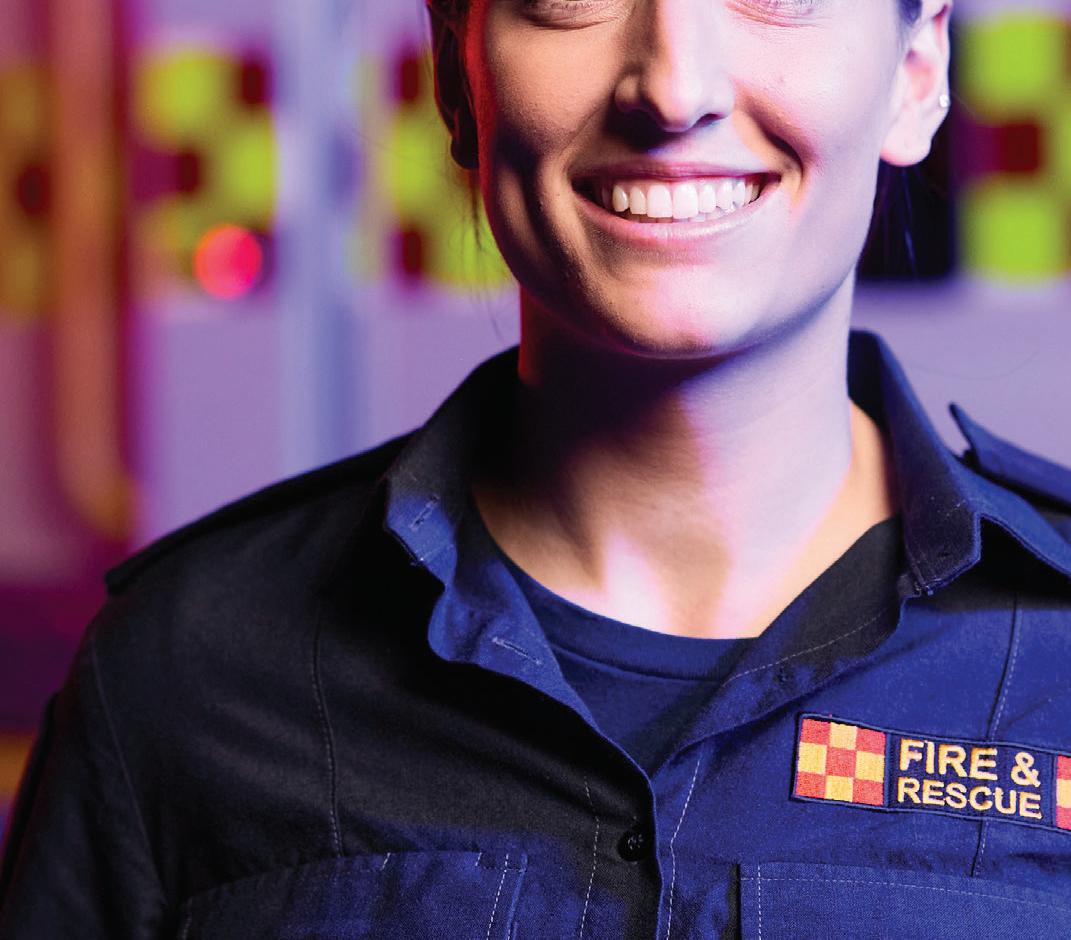


FEED Central has launched its new Hay Safe webpage, a hub to help farmers, contractors, and families stay safe around hay stacks and large bales.
The new dedicated online resource is designed to help families, farmers, hay producers, transporters, feedlot owners, dairies, and contractors reduce risks associated with hay production, stacking, and handling.
The new portal was been released for National Hay Safe Day on October 25 and brings together a comprehensive suite of free safety materials, including downloadable checklists for safe stacking, loading, and transport, short training videos on working safely with large square bales (550–750 kg), and printable posters and signage for sheds, yards, and workshops.
There are also family safety guides with practical advice for children and bystanders and links to training programs and awareness resources for teams working in hay and fodder.
Feed Central Managing Director Tim Ford said that in the fodder industry, it’s not unusual to know someone who’s been killed in a hay bale accident. “Unfortunately, with a hay bale accident — especially with large square bales — it’s rarely just an injury; it’s more often a death. We want to change that.
“Our new Hay Safe portal is about making good safety information easy to access and relevant to the way people actually work on farms and in sheds. The goal is simple: everyone gets home safely at the end of the day.”
According to AgHealth Australia, 72 people
died on Australian farms in 2024, with 133 more seriously injured — the highest toll in five years. The handling, stacking, and transport of hay bales remains one of the leading causes of fatal incidents, particularly involving large square bales that can weigh over 700 kg.
Hay Safe Day was initiated by Western Australian hay grower and former AFIA Director Suzanne Woods, following a tragic on-farm accident. Since then, the Australian Fodder Industry Association (AFIA) has championed the event nationally each year, encouraging farmers, contractors, and supply chain partners to pause, reflect, and talk about safety.
“Feed Central is proud to support National Hay Safe Day and the people behind it,” Mr Ford said.
“We see first-hand how one simple decision, just taking a few minutes to do something safely, can be the difference between life and death. This is our contribution to keeping the conversation alive.”
• Visit: https://www.feedcentral.com.au/haysafety-day/ to access free safety resources, printables, and videos.
About Feed Central
Feed Central is Australia’s leading quality assurance company for hay and feed. Based in Toowoomba, Queensland, the company provides independent testing, quality systems, and farm safety programs aimed at strengthening the fodder industry and supporting rural communities. Learn more at www.feedcentral. com.au.

ENSURING farmers have the tools and tailored support they need to make farms safe places to live, work or visit, is the focus of the Victorian Government.
Deputy Premier and Minister for WorkSafe and the TAC Ben Carroll has announced a $2.6 million funding agreement between WorkSafe and the Victorian Farmers Federation (VFF) to deliver the next phase of the Making Our Farms Safer project.
The funding will expand the project’s dedicated safety advisory service, which delivers on-farm, in-person support to identify and help manage key risks.
The project also supports farmers with a range of tools and resources that help t hem adopt better on-farm health and safety
practices.
Agriculture employs about two per cent of the Victorian workforce but is one of the State’s high-risk industries, accounting for 33 work-related deaths since 2021. In that same period, WorkSafe accepted 2,458 claims from Victorian workers seriously injured in the sector.
This next phase of the Making Our Farms Safer project will have a stronger focus on high-risk areas such as cattle handling and the use of machinery including tractors and attachments, quad bikes and side-by-sides – which together account for more than a quarter of all farm injuries.
As part of this funding boost, the VFF will visit hundreds of farms, organise more
safety activations, presentations and events, and help provide farmers with more practical support from industry experts and peers who understand the unique realities of farm life.
The partnership is part of WorkSafe’s broader strategy to build strong relationships with farmers and industry groups to help drive down injuries and fatalities in the agriculture industry.
This includes the successful It’s never you until it is campaign, which shares safety success stories from farmers, highlights the crucial role of safety conversations, and challenges common ideas which contribute to unsafe practices – such as that injuries and fatalities only happen to inexperienced
farmers.
Deputy Premier and Minister for WorkSafe and the TAC Ben Carroll said: “An investment in farm safety is an investment in the people who keep Victoria running – and this project supports farmers to create safer work environments without the red tape. It’s practical, personalised and it’s been shown to work.”
“We’ve been listening to farmers who’ve asked for more in-person, tailored support from industry peers who understand the realities of farm life – and we’re delivering.”
For more information visit worksafe.vic. gov.au/saferfarms or makingourfarmssafer. org.au
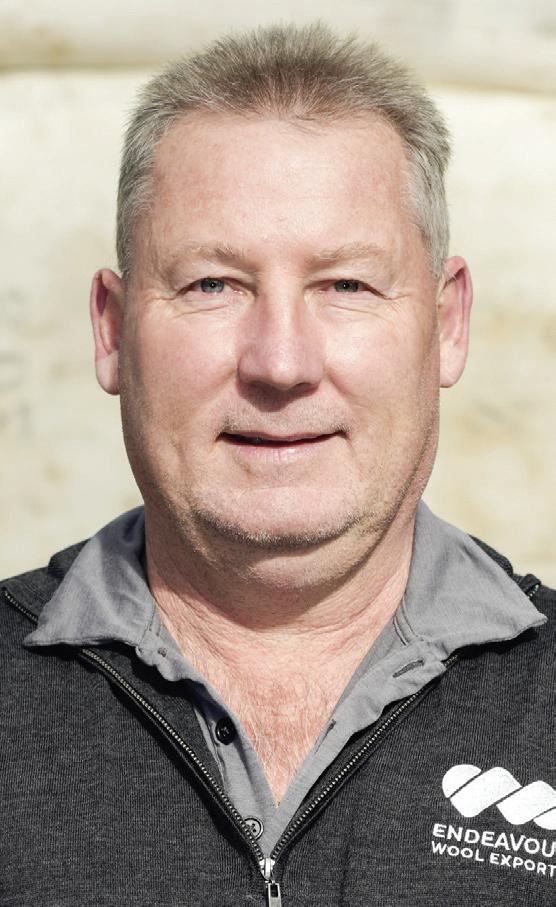




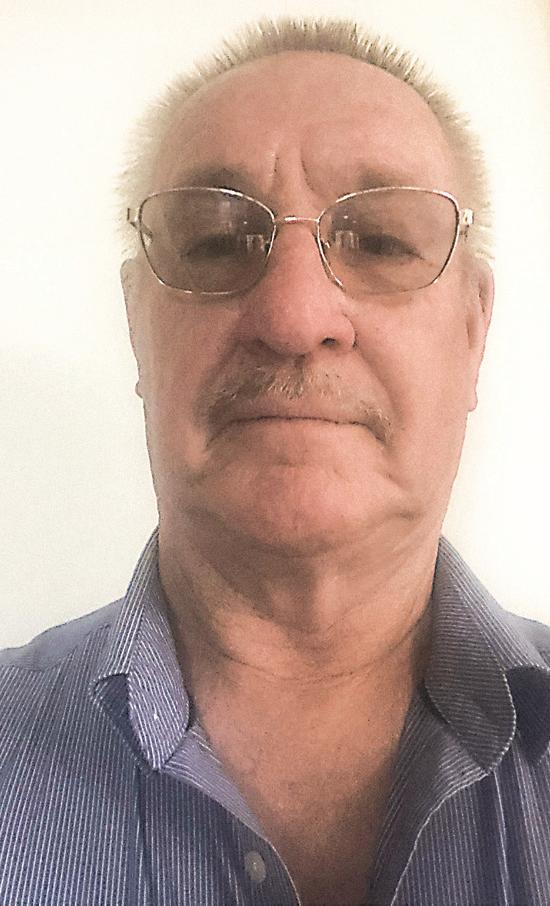


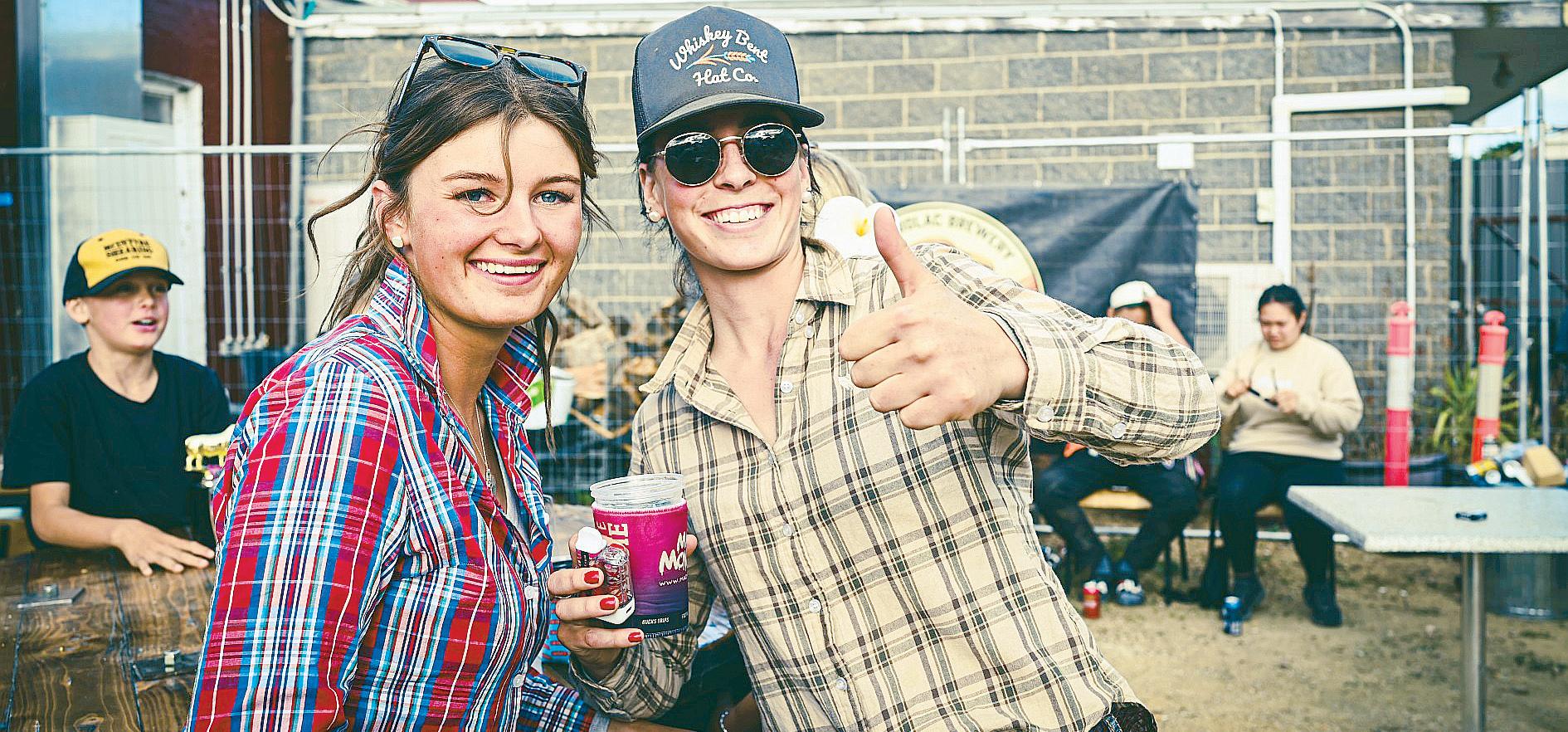

THE blades are set to fly again as Lake Bolac Hotel & Brewery announces the return of the Lake Bolac Speed Shear on Saturday 29 November - a major community event celebrating skill, strength, and country spirit.
Following the success of its inaugural year, this year’s competition promises to be even bigger, featuring a $10,000 prize pool, live entertainment, children’s activities, market stalls, and a full day of shearing action at the Lake Bolac Hotel & Brewery grounds.
Event organiser Dianne Toulson said the event is all about celebrating the hard work and talent of Australia’s shearers while bringing the community together.
“It’s one of those great country days where everyone comes out — from shearers and farmers to families and visitors,” said Ms Toulson. “We’re proud to create an event that supports our local community, showcases regional talent, and keeps the spirit of country competition alive.”
The competition will feature categories for Open, Intermediate, Women’s, and Senior shearers, with prizes awarded to the top three in each division:
• Open: 1st $3,500 + trophy | 2nd $2,000 | 3rd $1,000
• Intermediate / Women’s / Senior: 1st $500 + trophy | 2nd $250 | 3rd $100
The Lake Bolac Speed Shear is proudly hosted by the Lake Bolac Hotel & Brewery, with the event’s proceeds helping to cover community activities, entertainment, and event infrastructure.
Ms Toulson said the event has already attracted attention from shearers and supporters across the region.
“We’ve had incredible support from sponsors, local businesses, and volunteers. It’s become a real point of pride for Lake Bolac — a day where the community comes together to celebrate what makes country life great.”
The event is open to all ages, with live mu-
sic, food and drink from the Lake Bolac Hotel & Brewery, and a relaxed country atmosphere for visitors and families.
Event details:
Saturday 29 November 2025
Lake Bolac Hotel & Brewery
• $10,000 prize pool
• Live music, food, drinks, and family fun all day
Shearer registration and event info:
• https://www.eventbrite.com/e/1694283821 519?aff=oddtdtcreator
NLIS accredited eID tags are replacing visual tags for sheep and goats.
Switching is easier than you think.
Newborn stock must have an eID tag before leaving their property of birth regardless of stock numbers.


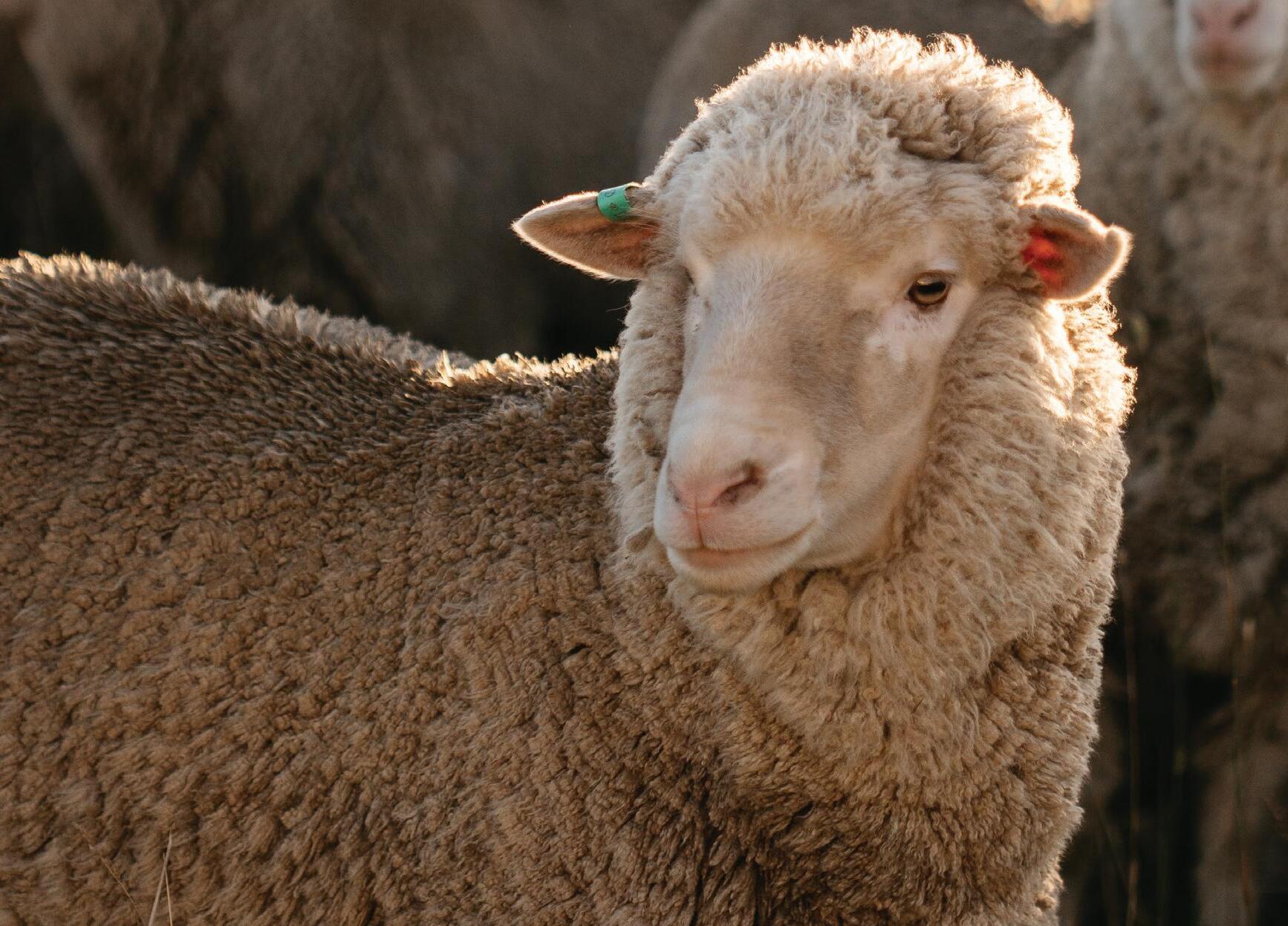
Animals born before 2025 need to be tagged with an eID by 1 January 2027. eID data must be recorded to the NLIS database when you receive stock on your property.
Support is available for farms of all sizes, with discounts and rebates on offer, plus helpful videos, fact sheets and case studies to guide you through the change.












Make the change today.
pir.sa.gov.au/eid
THE Heinrich family reaped the rewards of many years of dedicated commitment to the sheep industry, and the resultant outstanding quality they presented at their annual three breed sale held recently on Kangaroo Island.
The Heinrichs offered 352 rams from their White Suffolk, Maternal Composite and Poll Merino studs in a four-and-a-half-hour extravaganza, resulting in an impressive 97 per cent clearance, to buyers from five states.
Of the 340 lots that sold at auction, it was one of the Poll Merinos that topped the overall sale at $16,000, while two White Suffolks topped their biggest and main draft at $13,000 each.
Overall, the 340 lots averaged an exceptionally strong $2483.
The high-quality reputation of Ella Matta genetics is expanding, as the sheer number of online bids made this year through the Auctions Plus network indicated.
Auctions Plus co-ordinator Seb McDonald was kept consistently busy throughout, with 618 online bids, operating on 58pc of the lots and accounting for 20pc of the overall sale gross from the successful online bids.
While the overall sale top came in the Poll Merino offering, it was the biggest and main draft of 217 White Suffolk rams that kicked the auction off in grand style.
Stud demand drove the White Suffolk average upwards with 15 rams going to ram breeding flocks from four states - averaging $6107.
Ian and Donna Gilmore and Sons, Baringa stud, Oberon, NSW, kicked the sale off on a great note with a successful $9500 bid on the lot 1 ram, EM240359, one of several already used in the Ella Matta stud as ram lambs.
The Gilmores later added a good average breaker at lot 30, EM240189Tw for just $3200.
Lot 2, EM240458, by Farrer 220173 impressed many with his sire power and visual carcase attributes, but it was his performance data that impressed even more.
With figures for weaning weight (WWT) of 13.4, post weaning weight (PWT) of 20.2, eye muscle (PEMD) of 5.5, and a lean meat yield (LMY) of 4.9, all ranking in the top 5pc nationally across all terminal breeds, his lamb eating quality (LEQ) and terminal carcase production (TCP) indices were both over 180, ranking him high in the top 1pc nationally.
He attracted 17 online bids, but it was the Hull family, Kattata Well stud, Streaky Bay, which purchased him for the equal top price of $13,000, with the Funke family, Bundara Downs stud, Bordertown taking a semen share post sale.
Six lots later the $13,000 price was equalled when EM240089, sired by Farrer 220103, went under the hammer.
Most of the action was in the sale shed on this very impressive young sire, also having five traits in the top 5pc nationally on Lambplan, culminating in a top 1pc ranking for LEQ of 167.8.
Leigh and Jayne Richards, Tongara stud, Netherton, won the strong bidding duel, with Jonno Hicks, Hannaton stud, Kaniva being the underbidder.
Repeat client, Warren Thompson, Hedingham stud, Wickepin, WA purchased EM240441, sired by Ashmore 221308 for $8000, being attracted by his structural excellence, breed type and impressive performance data.
While the stud sales were the “cream on top” for the Heinrich family, the main focus is commercial relevance, which attracted a large group of commercial clients.
It was one of the mainland buyers who took out the volume buying honours.
Mark Mackinnon, Langi Willi P/L, Skipton, Victoria,picking up the first of his 17 purchases at lot 14 for $2500, and his last at lot 209 for $2000.
Long term supporters and neighbours, the Mumford family were back once again as strong as ever.
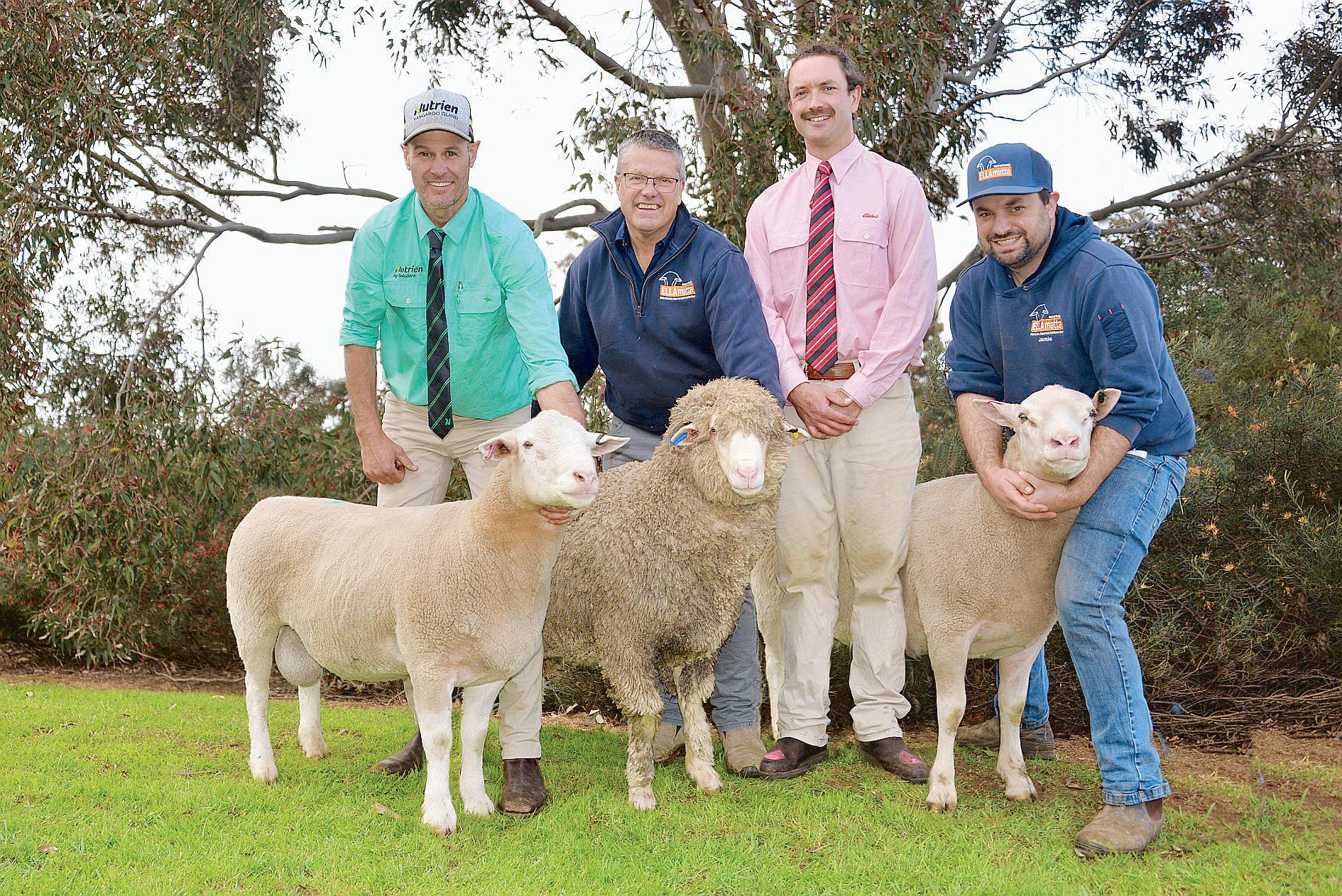
Sam Mumford paid to a top of $4200 and averaged $2613 for 15 outstanding rams.
Mike Smith successfully bid on 12 rams from $2000 to $2800, while Simon Kelly, Mine Creek, paid from $2200 to $3000 for 10 rams.
Local Spence Dix and Co agent, Greg Downing was active for several clients with SR & L Morgan being the most prominent, picking up 11 rams from $1600 to $2000.
John Bell, Spring Hills, Wisanger, was successful on 10 lots from $1800 to $2600, while Lloyd and Christine Berry, MacGillivray also purchased 10 from $1500 to $2500.
Tim Larcombe, Pintavale, Gosse, was also prominent, purchasing 12 rams from $1600 to $2800.
There were 44 commercial buyers of the 202 flock White Suffolk rams, averaging $2227, a price reflective of their quality.
Following the White Suffolks was the 81-strong Maternal Composite offering.
Two who appreciated the commercial qualities of the Maternal Composites were the Fogden family and Rick and Annie Morris, both paying to a top of $4200 in purchasing four and six rams respectively.
Another longer-term local supporter of these genetics was Steven Childs, picking up five from $2200 to $2800.
The first five lots went to online buyers before Daniel Pledge, buying through Kangaroo Island Land Ltd, broke that sequence with the first of 12 purchases in this catalogue at $2600.
His 12 averaged $1817 and included five from the Merino-infused line.
Lachie Bell, Bella Vista, Kingscote, was the only other buyer to hit double figures, purchasing 10 rams from $1200 to $2200.
Tim Buck, Buck Pastoral was another strong local buyer with six rams from $2200 to $3600.
The draft topper, EM240087 for $4400, was purchased by Tim Leeming, Coojar, Victoria while Matt and Tanya Tonissen, Chrome Sheep Stud P/L, Hamilton picked up EM240242 for $3400.
Libby Creek, operating for Hillcrest Pastoral Co, Avenue Range gave the strongest mainland support with the purchase of eight rams to $2800 and at a $2375 average.
Overall, 17 buyers were successful in purchasing in this draft with 74 of the 81 clearing at a $2324 average.

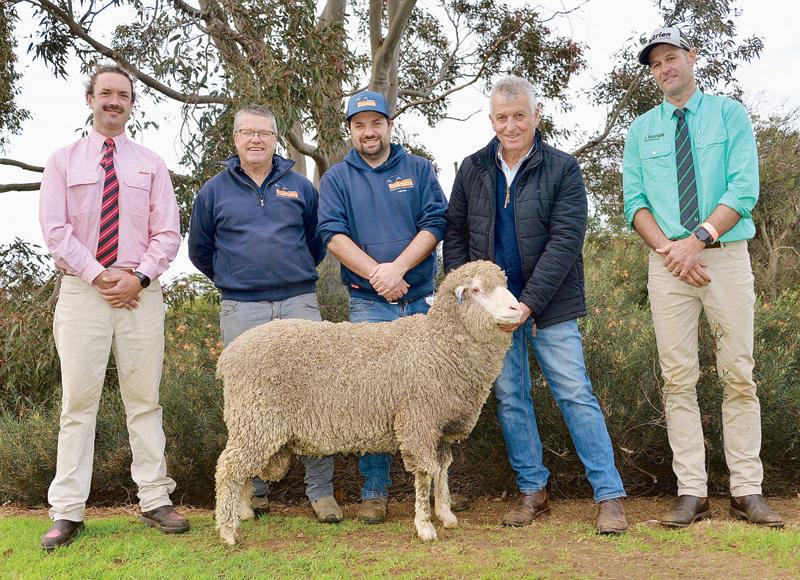
The Poll Merino offering of 54 impressive youngsters was good.
They displayed the free growing, long white stapled fine wools sought by the wool industry and included the overall sale’s top priced lot at $16,000.
Bill Walker, Classings Ltd, sees a lot of quality Merinos in his classing duties for many studs and commercial flocks across the country.
Mr Walker not only praised the offering, but was also the eyes for principals of five studs, ultimately purchasing five top rams.
These included lot 4, EM240393Tw, sired by Anderson 190590, which was sought after by the astute teaming of O’Brien Poll, Kyancutta, and Kiandra Poll, Keith.
Mr Walker had to go to the sale top of $16,000 before securing him for the O’Brien and Kluska families.
Mr Walker also purchased lot 1, EM240459 at $4250 for Hansi Graetz’s Pepper Well stud, Keyneton; lot 2, EM240060 for $6000 for the Keller family’s Ramsgate stud at Tintinara; and two rams, EM240410 and EM240414 at $4000 and a surprisingly cheap $2250 respectively for the Woolford family’s Karawatha Park stud, Buckleboo.
The seven rams in the draft that went to stud or ram breeding flocks averaged $5500.
Leith Tilley, Booborowie, was also a prominent buyer, purchasing six rams at auction from $1000 to $2250.
Josh Graham, Glencorrie Props, was the strongest, purchasing 13 rams in the main auction, paying from $1000 to $4000 and averaging $2481.
He then added four more from the mini auction from $700 to $1000, taking his tally to 17 rams.
Tim Buck, Buck Pastoral, was a determined bidder, purchasing 10 at auction from $1500 to $4000 and averaging $2625.
He added three from the mini auction at $1000 to $1400, on top of six Maternal Composites he purchased earlier.
Simon Kelly, Mine Creek, purchased 7 Poll Merinos at an average of $1679, adding to his 10 White Suffolk purchases.
The 42 Poll Merinos that sold to commercial producers averaged $2199; while with the seven stud purchases included, 49 sold at a $2670 average in a 91pc clearance.
A further eight cleared from the 22 available in the mini auction that followed.
In summarising the sale, Mr Wetherall said the Heinrich family had a renowned ability to breed and present for sale some of the best sheep industry genetics in the country.
“In reflection, this sale was arguably, and not surprisingly, the sheep sale of the year, which was endorsed by the number of stud breeders who purchased in all three drafts, plus the
activity,” he said.
A farming dynasty from North Byaduk has taken out top honours at the recently held Melbourne Royal Show.
Ian and Rae Christie have recently returned from the Show, having won Supreme Champion with Abraham, a 116 kilogram, July 2022drop Lincoln ram.
They also took home the Champion Ewe ribbon with a July 2023-drop female and the Long Wool group prize.
The English judge at the Royal Show, David Hodge from Okehampton, praised the ram, noting his big broad face, open nostrils, standing square, walking correctly, and very good Lincoln wool.
Winning the Long Wool group prize is a testament to the consistency of their flock, requiring the wool to be standardised across all four sheep.
“The UK judge mentioned that he had never judged a Lincoln before, so obviously they’re not popular over in the old country,” Ian said.
For Ian and Rae, breeding Lincoln sheep is not just a job, it’s both a passion that has spanned generations of the Christie family and a desire to continue the very rare breed. The breed is so rare in fact that even in its native homeland of the UK there are less than 700 ewes and it is listed as endangered.
The Christie’s Garvald Lincoln Stud, Blinkbonnie, is set on the plains of North Byaduk and Ian looks out over the same fields that his father, grandfather and great-grandfather worked on in years gone by.
His Scottish ancestors moved to the area in the mid 1800s.
“My great grandfather and his brothers came out here from Scotland and settled here after trying their luck on the goldfields. I recently discovered an old work journal in the old house and found out that they had been stonemasons and had built the court of petty sessions at Ballan, the court house at Swan Hill and put additions on the treasury at Avoca during the gold rush,” Ian said.
“We haven’t moved far,” he added as he moved quietly through his collection of Lincoln rams in the property’s old shearing shed.
The family’s Lincoln stud was formed in 1873 and boasts historic Stud Number 18.
Whilst the breed has gone out of favour, the Lincoln has influenced sheep husbandry in many countries, often through cross-breeding with Merino stock to produce a heavier frame carcass.
It has also contributed to the development of breeds including the Corriedale and the Polwarth.
“They have a good temperament, they make excellent mothers (mostly), they are very protective. It’s like people though, some are easy, some are not,” Rae said.
“The fleeces are very heavy and have a high prickle factor. We can’t even sell the wool - no one wants it. It’s the opposite of Merino wool.”
“They do produce great meat, although they are slow growers. You look at your Poll Dorsets, you can take a Poll Dorset lamb off at 6, 7 or 8 months, but these guys are still hanging on at 12 months,” she added.
The Christies have won too many ribbons to count at the various shows they have attended but for them, it’s not about winning. It’s about the fellowship and camaraderie with fellow breeders.
“We all help each other and help young people in showing. There’s always someone there to lend a hand, it makes it a lot more enjoyable,” Ian said.
“I have been involved in a lot of volunteer organisations such as the CFA and when you’re in a group you can achieve great things. On your own, you are worth nothing,” he said.
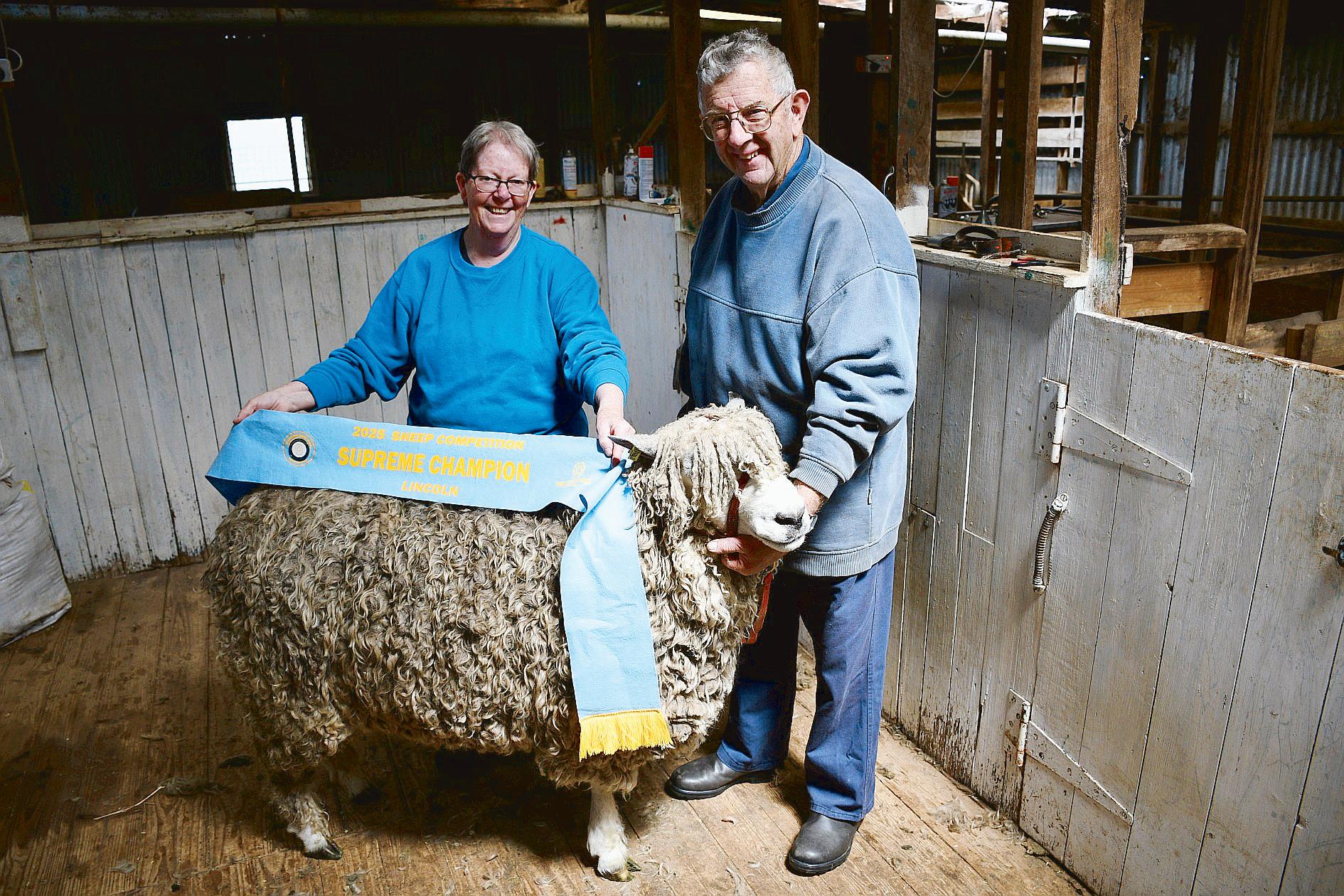

“It’s nice to know that somebody else thinks our sheep are good too but we enjoy teaching people about the breed,” Rae added, saying that an important part of traveling to the show is to be a part of the Heritage Breeds display alongside breeds such as Cheviots, Romneys and
Three years ago the Royal Agricultural Society (RAS) invited the Christies to Melbourne to attend a special dinner where Ian was made a life member and Rae was awarded the RAS Speed the Plough award for her work in promoting sheep.
Genetics are a major issue for the Lincoln breed, with no new genetics allowed into the country due to the strict quarantine regulations. Luckily there are still around ten studs still operating across Australia.
Due to the low monetary value of the breed, and the high costs involved in modern farming, not many people are willing to take on Lincoln sheep.
Despite the challenges, Ian and Rae’s children, Peter and Sarah, are committed to maintaining the Garvald Lincolns, alongside the family’s South Suffolk stud.
The last year, however, has been particularly tough on the land and the sheep, due to the drought. “It was hard for everybody. We used up all our own hay and then we had to buy in hay as well,” Ian said of their 400-acre operation.
Despite the headwinds, from the drought to the struggle to find shearers, the Christies’ dedication remains steadfast.
As Rae puts it, “We will just go until we can’t anymore.”
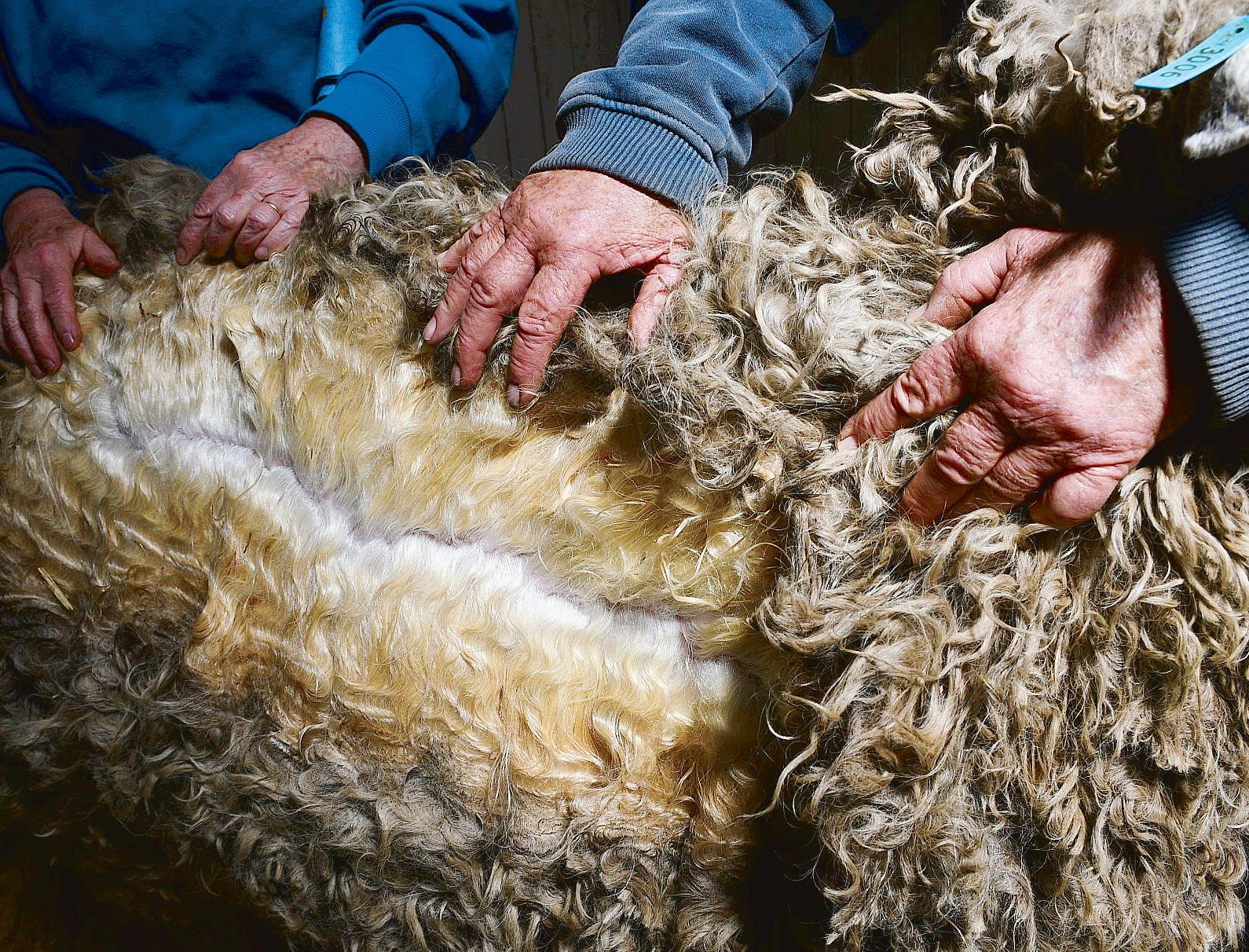

THE Victorian Government is backing a major international food manufacturer to establish its first Australian production facility in Western Victoria, creating 250 new local jobs and driving economic growth in the Wimmera.
Minister for Economic Growth and Jobs Danny Pearson last week announced Farm Frites Australia is establishing a $300 million APAC manufacturing base in Dooen to manufacture its popular frozen chips using Australian produce.
Farm Frites Australia supplies frozen chips, fries and other potato-based products to takeaways, pubs, clubs, and fast-food restaurants including KFC and Hungry Jacks right across Australia.
The 24-hour production facility, located next to the Wimmera Intermodal Freight Hub, will support Australian farmers, create jobs for local workers, and offer training and career opportunities for students in a region with a proud agricultural history.
Once operational in 2027, the manufacturing plant will have capacity to process up to 250,000 tonnes of Australian-grown potatoes every year.
The new food processing facility was granted planning permit approval under the Labor Government’s Development Facilitation Program which expedites planning decisions for eligible projects that will inject investment into the Victorian economy – creating new jobs and promoting economic growth.
After a national search, Farm Frites Australia settled on Dooen, near Horsham, to open the manufacturing facility – showing once again that Victoria is the nation’s manufacturing powerhouse.


Victoria has the largest and most established food and beverage manufacturing sector Australia, generating more than $44
billion in sales and service income and employing more than 76,000 people.
priority sectors including advanced manufacturing and agribusiness.



Would you like to advertise in the next edition of Agriculture Today and take advantage of our 36,000 readership?
We are currently taking bookings for our next edition. To secure your spot, please contact your local consultant.
Leesa Cook0427 718 172
Sierra Laird0438 593 449
Campbell Robinson0493 305 437
Christine Black08 8724 8172
Christine Cock0419 811 381
Josh Phelan08 8741 8173
advertising@agtoday.com.au
Don’t miss this opportunity to get your business in front of an engaged, local audience.
Victoria is the leading Australian investment destination for the food and beverage sector, attracting $170 million in foreign direct investment in 2024.
The Labor Government’s Economic Growth Statement received $240 million in the Victorian Budget 2025/26 to deliver more than 40 initiatives in full, that will support investment, create jobs, drive exports and boost industry and innovation.
The new $150 million Victorian Investment Fund will also drive business investment in the state, with $50 million set aside for a regional stream to accelerate growth in
Farm Frites Australia General Manager Kieran Prestidge said Dooen is perfectly located between the best growing regions in Australia and has excellent road and rail links, which will help us put more Australian produce on plates and tables all around the country.”
“Farm Frites Australia is delighted to have chosen Dooen – and the Wimmera – for our first Australian production facility and our $300 million investment in Victorian jobs, Australian farmers and local manufacturing.”
A tiny weevil could become a powerful ally for Australian grain growers battling flaxleaf fleabane, a persistent weed across northern, southern, and western grain regions.
CSIRO researchers are investigating Lixus caudiger, one of four promising biocontrol candidates, which early results suggest may offer significant impact without harming crops.
CSIRO principal research scientist Dr Gooden said the weevil was one of four promising fleabane biocontrol candidates, which was potentially the most impactful.
Dr Michelle Rafter, leading the team studying the weevil, said it is showing strong host specificity.
“So far, our testing shows the weevil is restricted to fleabane and its close relatives,” Dr Rafter said.
“That’s exactly what we want in a biocontrol agent, something that hones in on the target weed without threatening native plants or crops.”
Flaxleaf fleabane thrives in non-cropped areas such as fence lines and roadsides, spreading wind-borne seeds back into cropping paddocks and creating headaches for farmers.
GRDC manager weeds, Sarah Morran, emphasised the value of biocontrol in longterm weed management.
“Weeds cost growers significant amounts of money and impact on crop yields,” Ms Morran said.
“By investing in innovative approaches like biocontrol, we’re helping growers tackle herbicide resistance, using nature’s own checks and balances to help manage weeds more sustainably.
“Weeds like flaxleaf fleabane won’t be beaten by chemicals alone.
“Integrated solutions, including biological control, could offer a sustainable pathway to protecting yields and profitability.”
The CSIRO project forms part of the GRDC national Weed Management Initiative (WMI), a 5.5-year program connecting leading researchers and specialists across four nodes to develop innovative, regionally tailored weed management strategies.
While it may be years before the weevil reaches paddocks, optimism remains high.
“Finding a safe, effective biocontrol agent takes patience, but the payoff is worth it,” Dr Rafter said.
EVA BAILEY Partner -Mellor Olsson Lawyers
‘TWAS the night before Christmas, when all through the house, not a creature was stirring… except separated parents, frantically negotiating who has the kids on Christmas Day. It’s hardly the festive poem any family hopes for — but for many separated parents, planning the holidays can be one of the most stressful parts of the year.
With Christmas fast approaching, now is the ideal time to finalise parenting arrangements. In South Australia, for a parenting-arrangements application to be heard in time for the Christmas period, the commonly referenced cut-off is the second Friday of November. If you haven’t yet locked in plans, it’s important to act quickly — and explore other pathways to reach agreement before the holiday season begins. In urgent matters, particularly where safety risks are involved, the Court may still intervene.
If you’re yet to confirm the Christmas schedule, consider these key questions:
• Will the children spend time with each parent on Christmas Day?
• Where and when will handovers happen?
• Are you alternating Christmas each year — and whose turn is 2025?
• How do your plans fit in with extended family, farming schedules, or travel? What are the care arrangements for the rest of the school holidays?
Starting these discussions early allows time to resolve differences and helps children adjust to their festive routine. Remember — compromise and calm communication can make all the difference.
If negotiations aren’t progressing, mediation or Family Dispute Resolution can help. A family lawyer can also assist in discussions or work directly with the other parent’s lawyer. Once an agreement is reached, put it in writing. A Parenting Plan or Consent Orders provide clarity and can reduce future disputes. Most importantly, keep the focus on the children. The best gift you can give them is a Christmas filled with joy, reassurance, and family connection — wherever Santa may be visiting.
If you need support finalising your arrangements, Mellor Olsson’s Family Law team is here to assist. Contact us on 8414 3400 or lawyers@molawyers.com.au
A little planning now can go a long way toward a very merry Christmas.
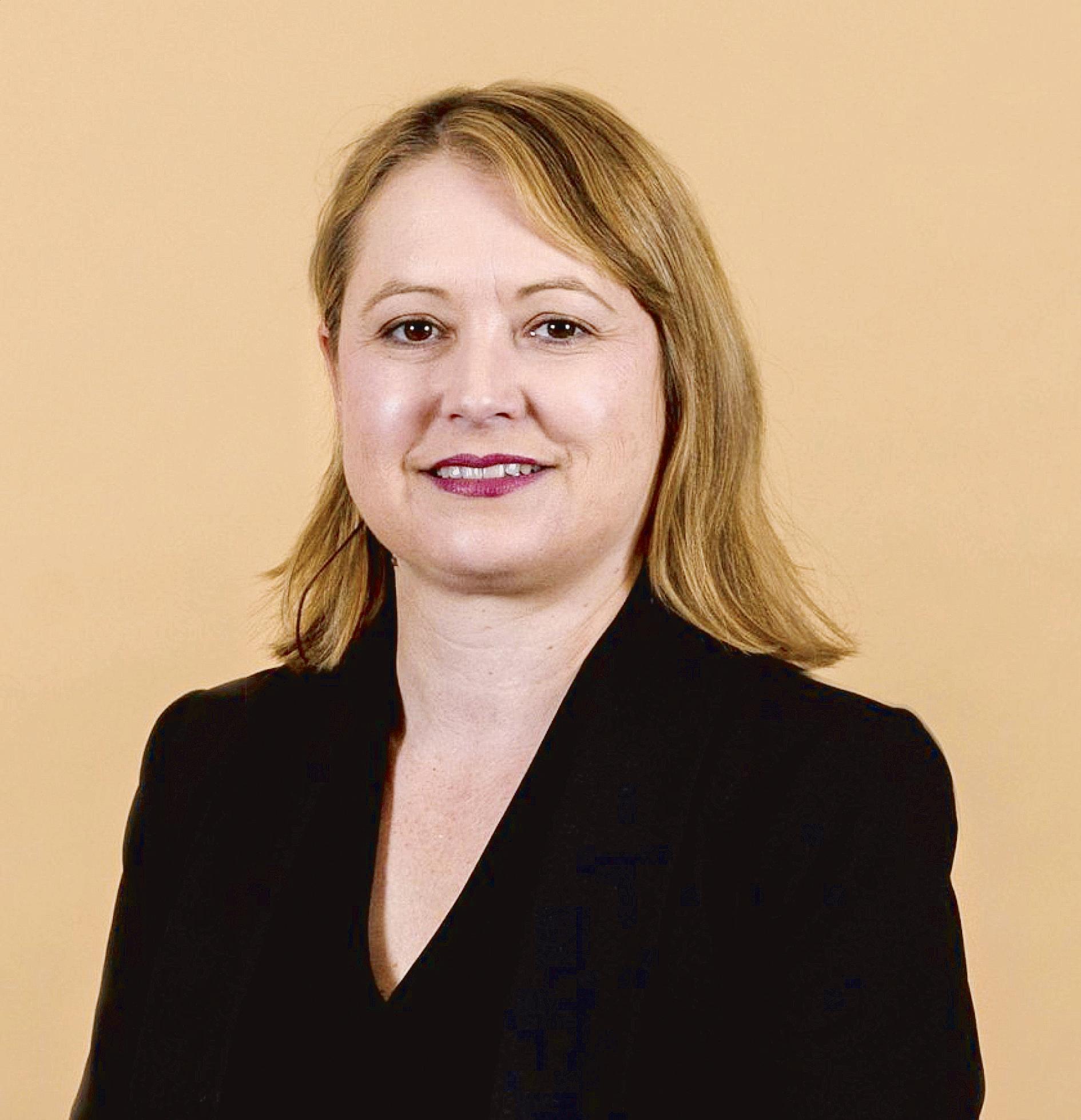
WITH the conditions looking favourable for mice in some areas of SA, South East growers should be vigilant.
A CSIRO Mouse Monitoring Report released last week suggested conditions are building on farms as favourable for mice as numbers at key cropping and trapping sites continue to rise.
Grain Producers SA (GPSA) is urging South Australian growers to remain alert for increasing mouse activity across the Adelaide Plains and Yorke Peninsula, following the latest CSIRO Mouse Monitoring Report.
The November report has identified moderate to high activity in some South Australian cropping regions, particularly on the Adelaide Plains and parts of Yorke Peninsula, while activity remains low in most other areas. However, the patchy distribution of activity means that populations could escalate quickly over summer if conditions remain favourable.
GPSA Chief Executive Officer Brad Perry said it was critical that growers stay proactive and report local mouse numbers to help industry and researchers track potential prob-

lem areas.
“We’ve seen what happens when mouse numbers get away from us, the impacts can be devastating, not just to crops but to stored grain, machinery, and farm infrastructure,” he said.
“While the latest report shows mouse activity is patchy, there are clear warning signs that we could see a population build-up over summer if food sources remain high and weather conditions stay mild.
“GPSA is encouraging growers to actively
monitor their paddocks, clean up grain spillages, and use chew cards to gauge activity levels.”
The Report noted that as crops mature, the abundance of high-quality food could support mouse breeding and population growth through the warmer months.
CSIRO warned that monitoring and clean harvest practices will be essential to reduce the risk of a mouse outbreak by Autumn 2026.
Mr Perry said GPSA will continue raising concerns with key decision makers about
the current inability to use double-strength mouse bait (zinc phosphide - ZnP50) bait, which was critical during the last major mouse plague when accessed under an emergency permit.
“We believe decision makers should be considering the current CSIRO data and whether an emergency permit is potentially going to be required,” mr Perry said.
“If mouse numbers continue to rise, South Australian grain producers need access to every tool they can to rid of these pests, well ahead of seeding next year,” he said.
“We can’t afford to be caught off guard. Preparedness now, both on-farm and at a national policy level, is the best insurance against a repeat of previous mouse outbreaks.”
Growers are encouraged to report and map mouse activity using MouseAlert (www. mousealert.org.au) so other producers can see activity levels in their area.
Monitoring will continue through the summer, with the next CSIRO national report scheduled for March–April 2026.






